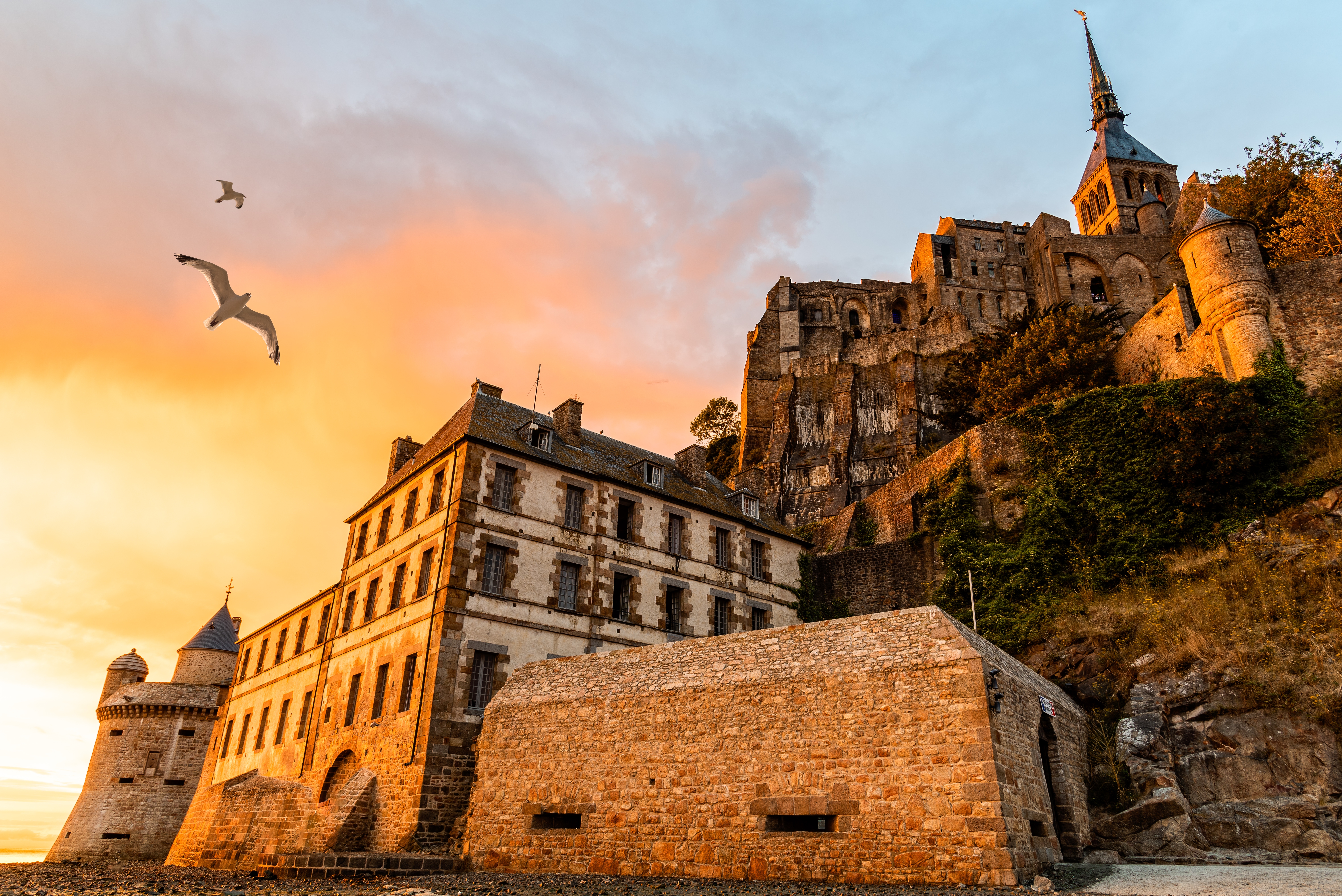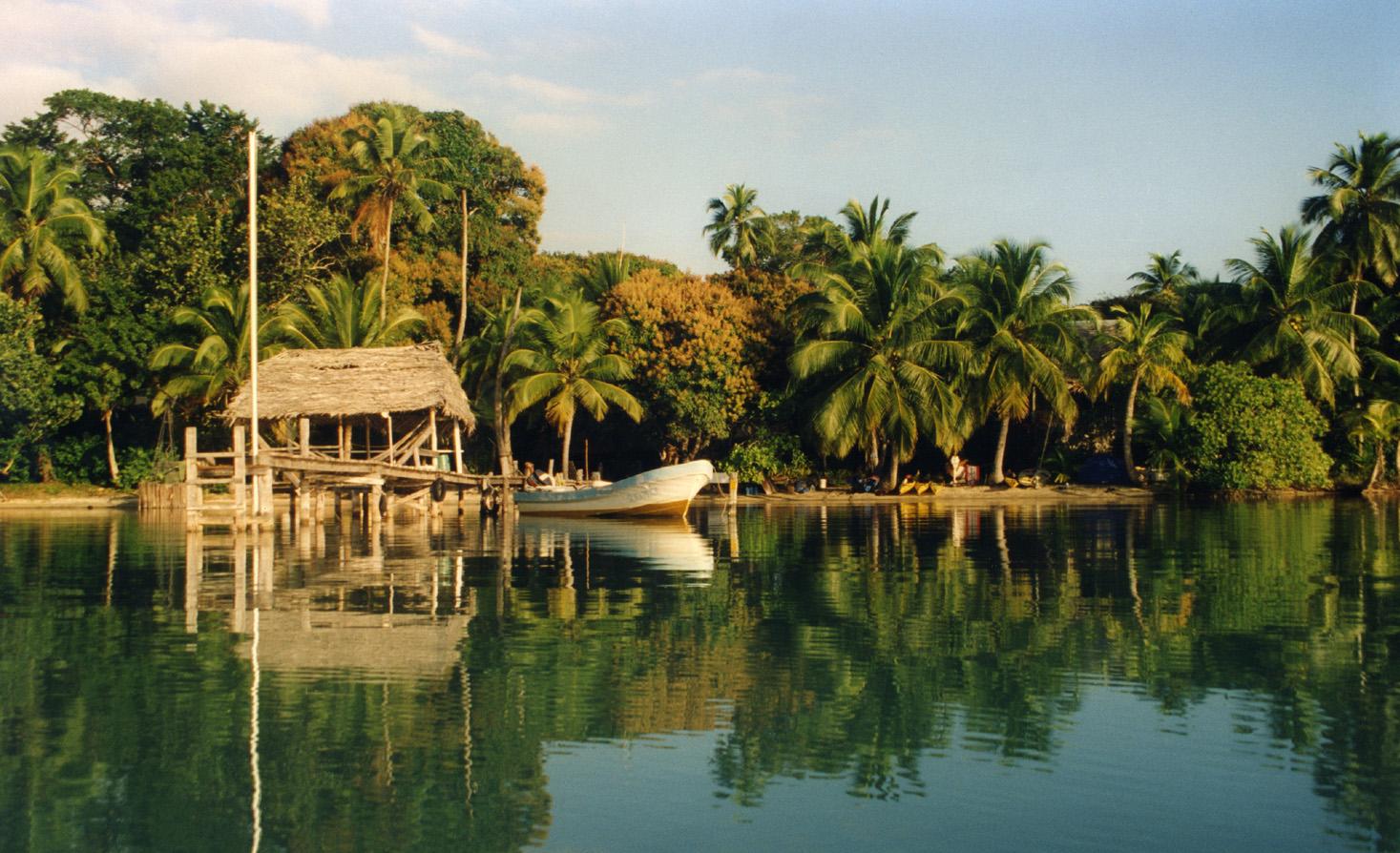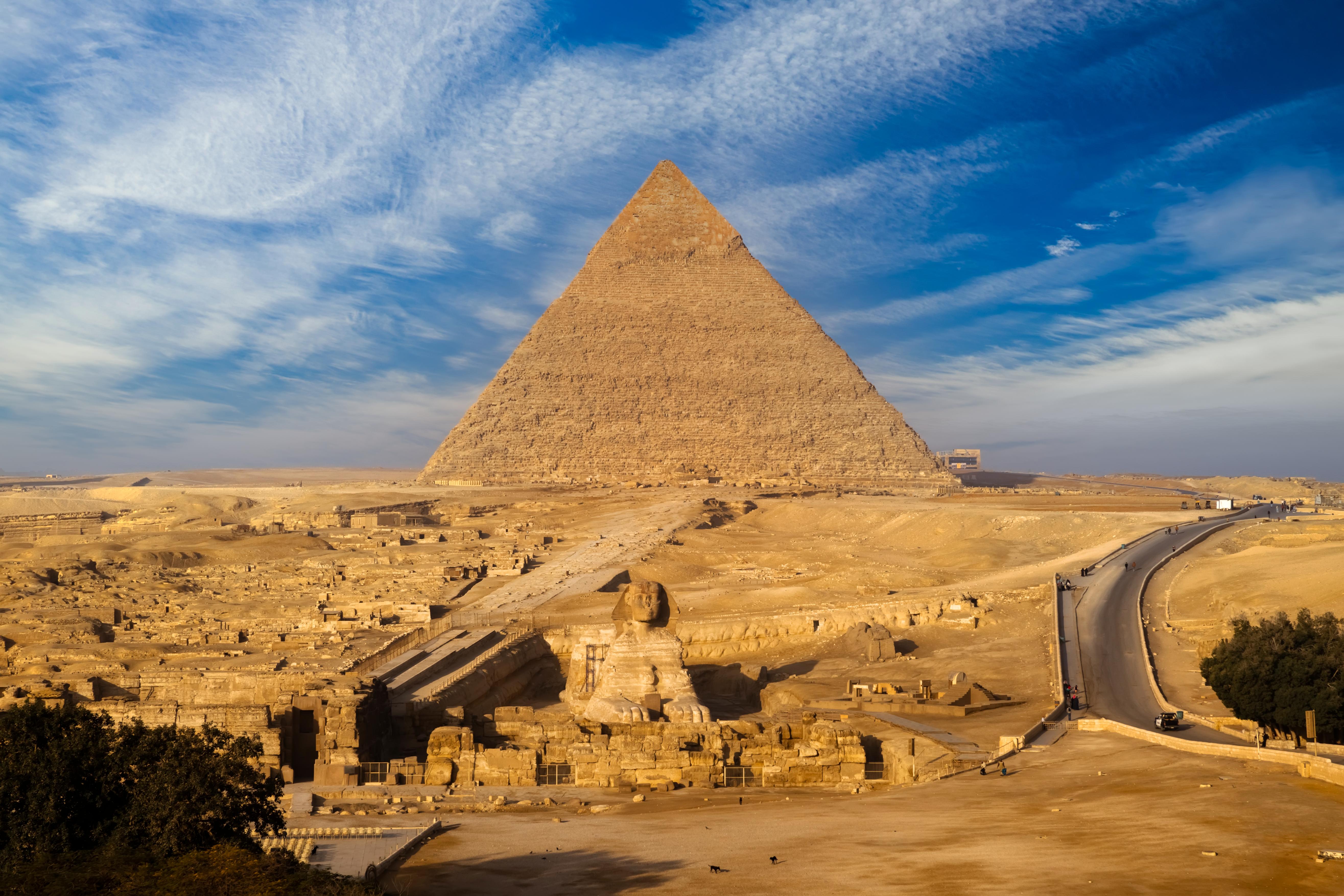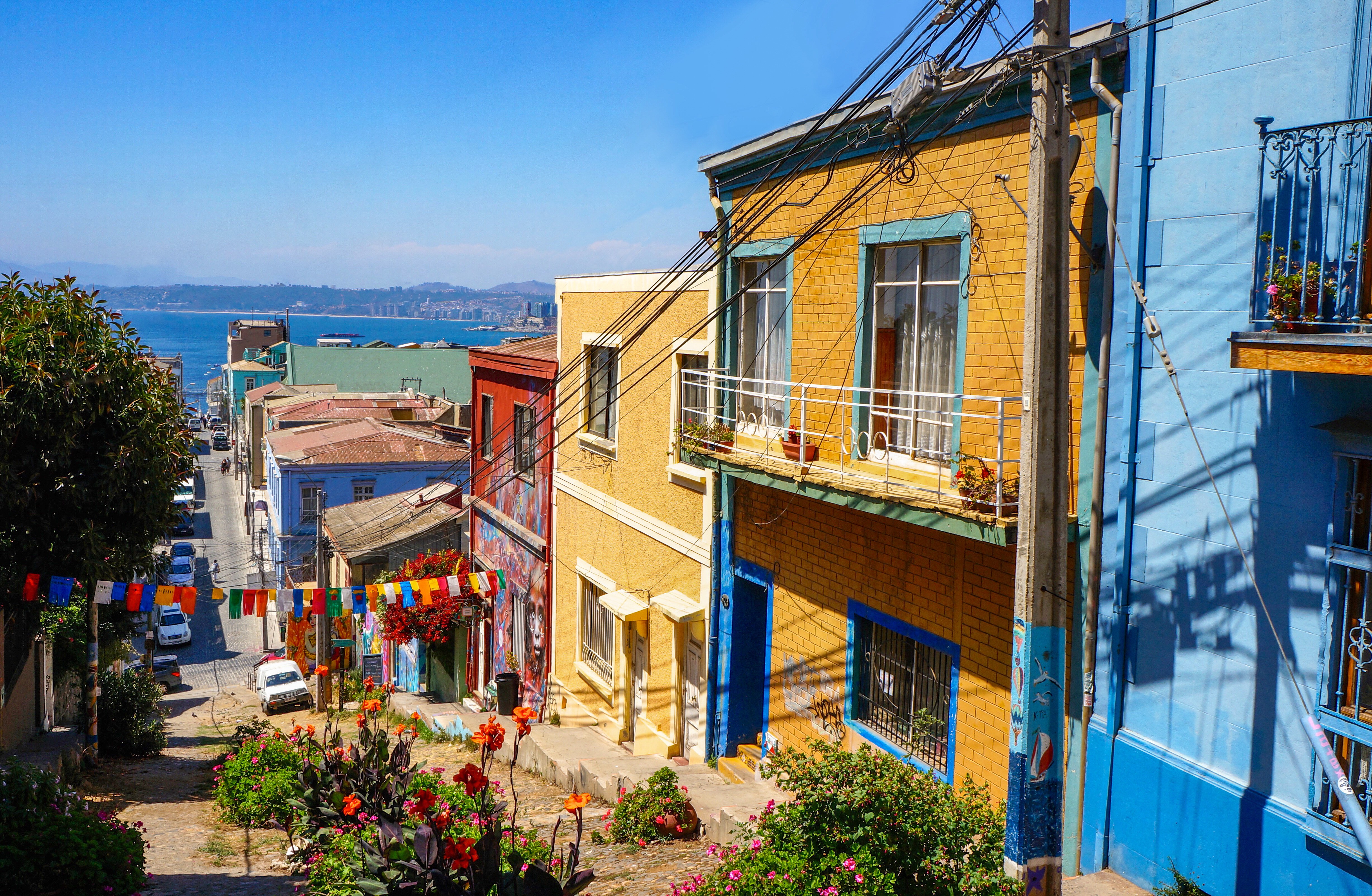European Titans: The Grandest Stadiums Every Sports Fan Must Witness
From roaring crowds to architectural marvels, Europe’s largest stadiums aren’t just sporting venues—they’re cultural icons. These are the places where legends are made, anthems echo, and entire cities hold their breath. Whether you’re a die-hard football fan, an architecture lover, or simply chasing the electric buzz of live events, these arenas offer something unforgettable. We’ve expanded our list to 29 of the largest stadiums across Europe, each one a destination in its own right. From historic battlegrounds like Camp Nou to cutting-edge giants like Wembley, these stadiums are more than seats and turf—they’re stages for national pride, generational triumphs, and unforgettable moments. As you journey through this list, you’ll find stories carved into steel and stone, atmospheres that defy description, and a deeper appreciation for the way sport shapes identity across borders. Strap in—it’s not just a tour, it’s a pilgrimage through the heart of Europe’s sporting soul.
1. Camp Nou: The Heartbeat of Catalonia (99,354)
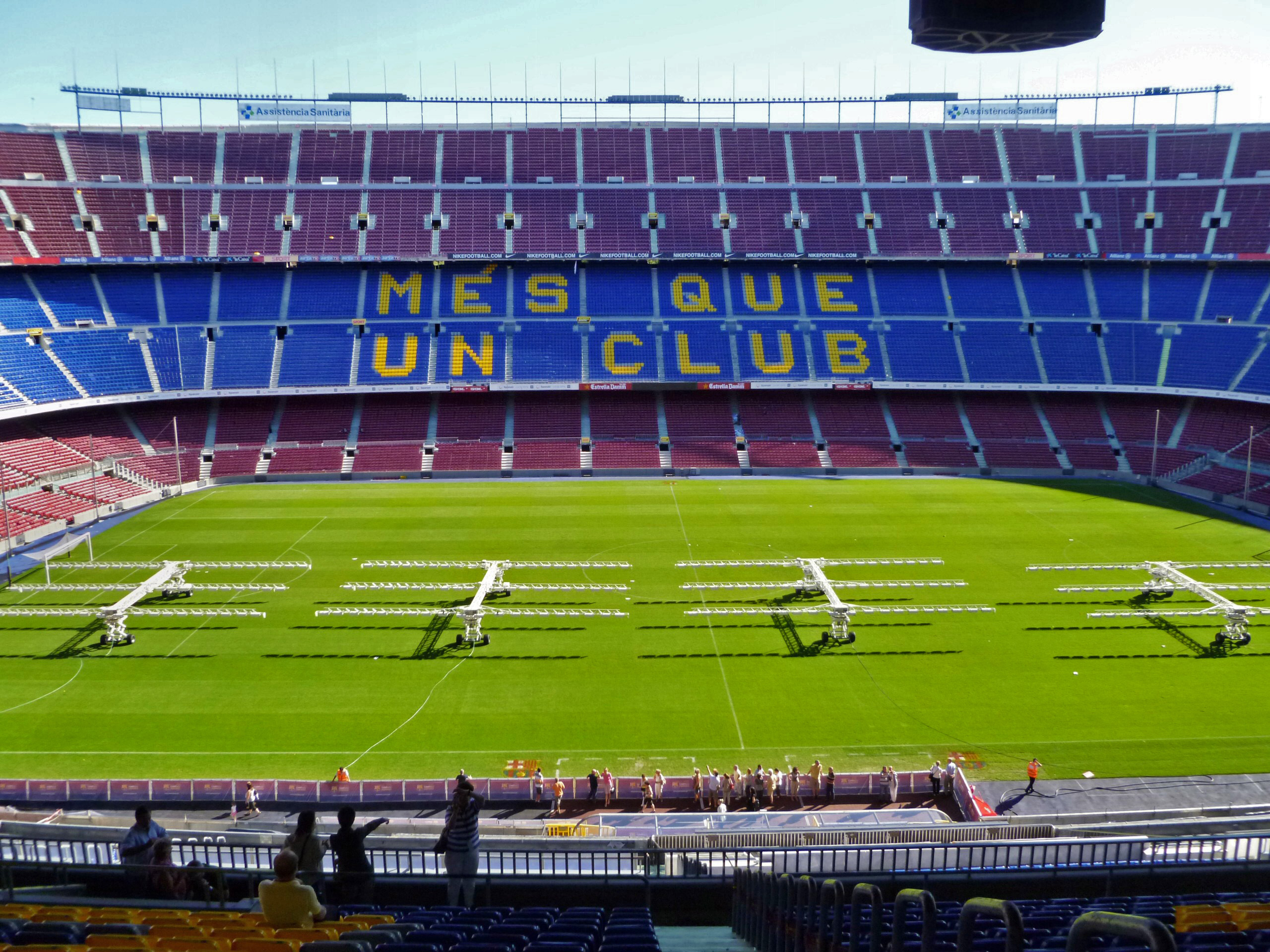
Camp Nou, located in Barcelona, Spain, is not just the largest stadium in Europe but also a symbol of Catalan pride and identity. Home to FC Barcelona, this stadium has witnessed countless historic matches and legendary players, such as Johan Cruyff and Lionel Messi. Its construction in 1957 marked a new era for the club, reflecting the ambitions of a region yearning for recognition. The stadium's design, with its towering stands and open-air concept, creates an electrifying atmosphere that is palpable even before the match begins. Visitors to Camp Nou can explore the FC Barcelona Museum, which offers a deep dive into the club's storied past, showcasing trophies, memorabilia, and multimedia exhibits. This blend of sports and culture makes Camp Nou a must-visit destination for any football aficionado.
2. Wembley Stadium: The Icon of English Football (90,000)

Wembley Stadium in London is synonymous with English football, having hosted numerous iconic moments in the sport's history. Rebuilt in 2007, the new Wembley retained the spirit of its predecessor while incorporating modern design elements, such as the striking arch that dominates the skyline. This stadium is not only the home of the England national team but also the venue for major events like the FA Cup Final and UEFA Champions League Finals. Wembley embodies the passion and tradition of English football, offering fans an unforgettable experience. The stadium tour allows visitors to walk in the footsteps of legends, exploring the dressing rooms, the players' tunnel, and the Royal Box. Wembley's significance extends beyond football, hosting concerts and events that attract global audiences, making it a cultural landmark in its own right.
3. Signal Iduna Park: The Fortress of Dortmund (81,365)
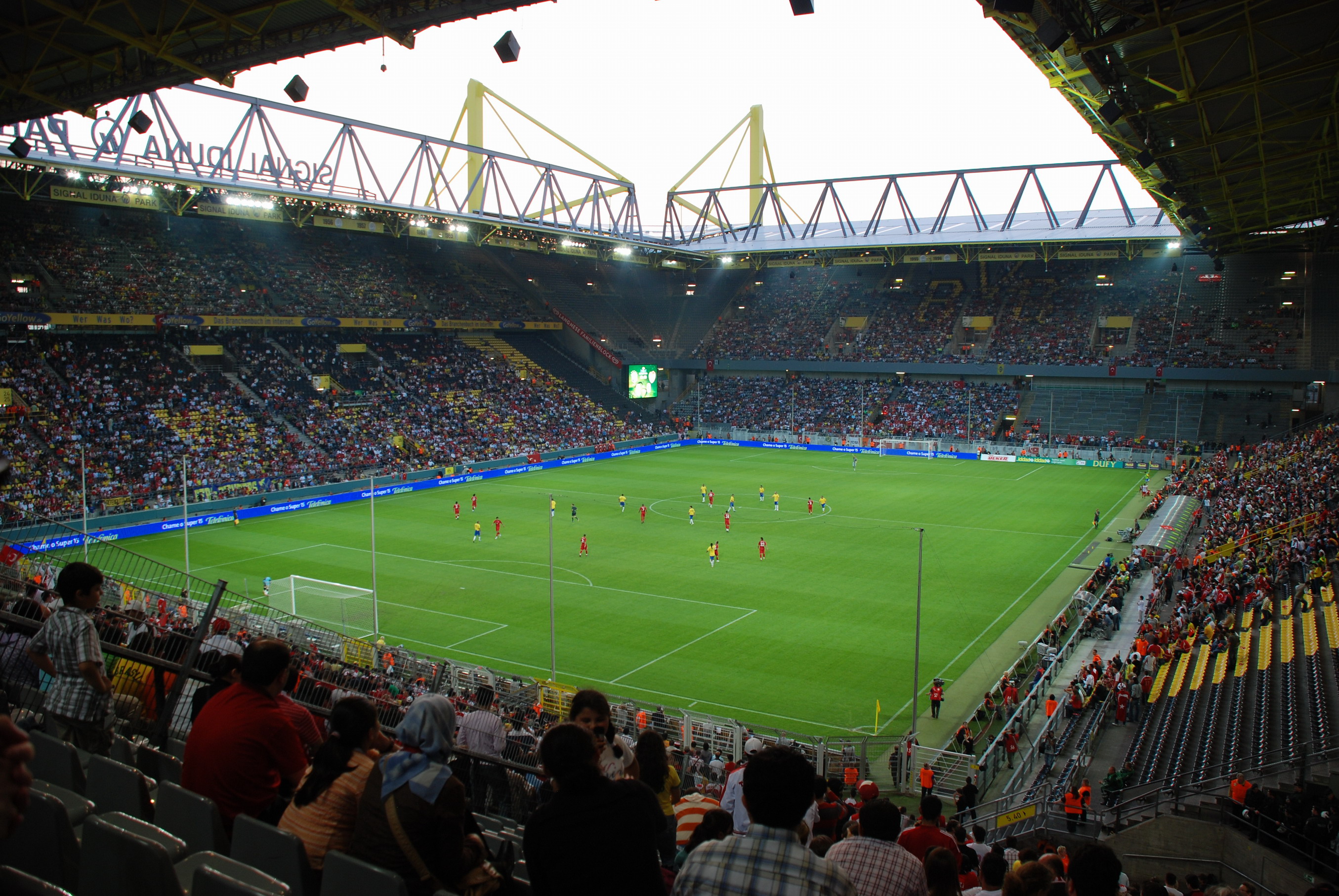
Signal Iduna Park, known to many as Westfalenstadion, is a fortress of football located in Dortmund, Germany. It is renowned for its incredible atmosphere, largely due to the "Yellow Wall," a massive terrace that houses the most passionate Borussia Dortmund fans. This stadium is a testament to the city's love for football, with every match day turning into a vibrant celebration of the sport. Built in 1974, Signal Iduna Park has undergone several expansions, now accommodating over 81,000 spectators. The stadium's design focuses on creating an intimate connection between the fans and the pitch, ensuring that every cheer and chant reverberates throughout the arena. A visit to Signal Iduna Park is more than just attending a football match; it's about experiencing the raw emotion and dedication that define German football culture.
4. San Siro: The Dual Home of Milanese Football (80,018)
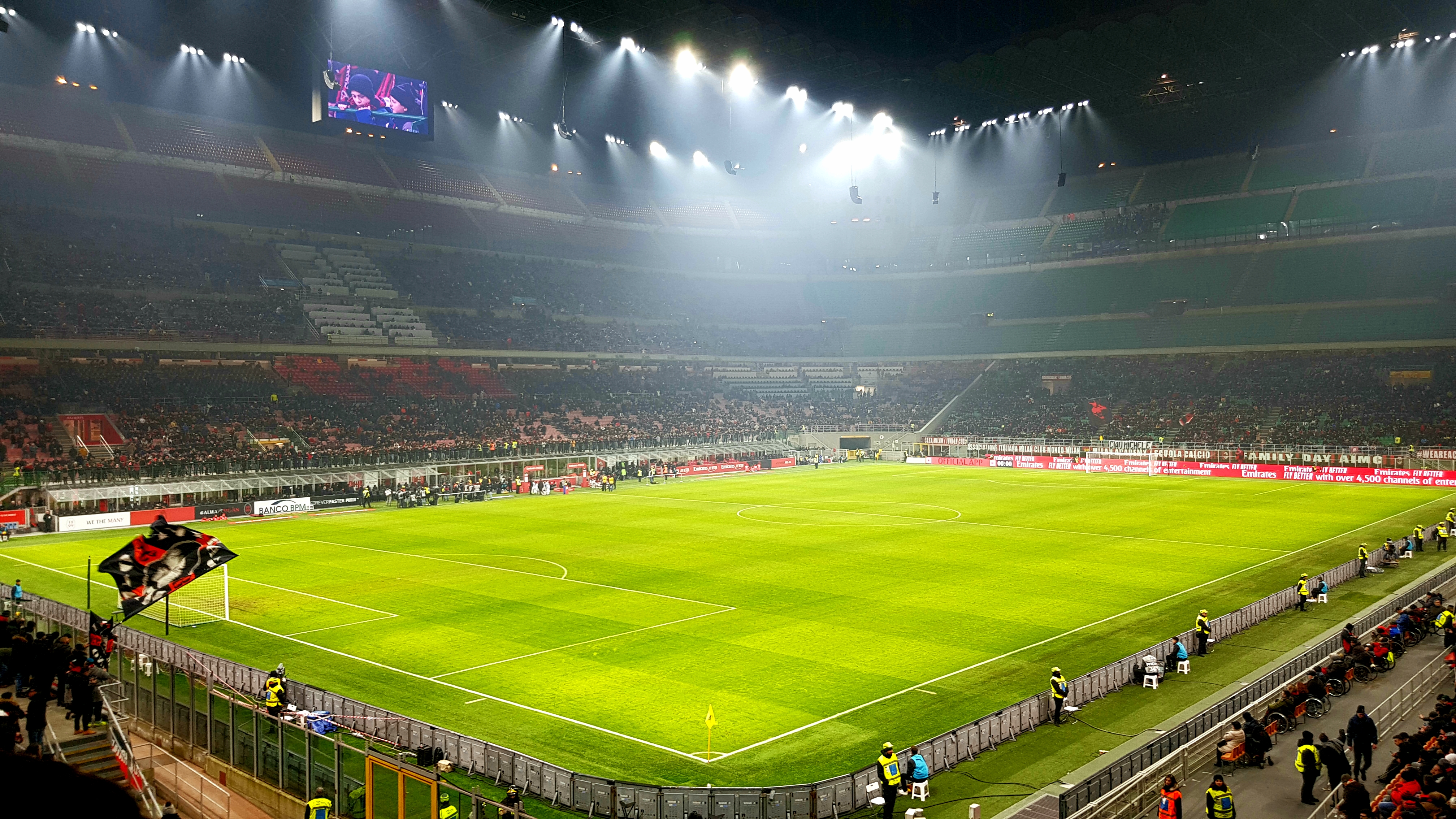
San Siro, officially known as Stadio Giuseppe Meazza, is the shared home of AC Milan and Inter Milan, two of Italy's most storied football clubs. Located in Milan, this stadium is a symbol of the city's rich football heritage. Opened in 1926, San Siro has been the stage for countless derbies, known as "Derby della Madonnina," where the fierce rivalry between the two clubs comes to life. The stadium's distinctive design, with its towering cylindrical towers and red girders, makes it instantly recognizable. San Siro's atmosphere is electric, with fans from both sides creating a cauldron of noise and color. The stadium museum offers a glimpse into the history of both clubs, showcasing jerseys, trophies, and interactive exhibits. San Siro is not just a stadium; it's a testament to the passion and tradition of Italian football.
5. Stade de France: The Pride of French Sporting Achievement (81,338)

Stade de France, located in the northern suburbs of Paris, is the national stadium of France and a symbol of the country's sporting achievements. Built for the 1998 FIFA World Cup, where France emerged victorious, the stadium has since hosted numerous international events, including the Rugby World Cup and UEFA Euro Championships. Its unique design features a floating roof and a retractable seating system, allowing it to accommodate a variety of sports and events. Stade de France is more than just a venue; it's a celebration of French culture and excellence. Visitors can take a guided tour to explore the stadium's architecture, visit the changing rooms, and walk through the players' tunnel. The stadium also hosts concerts and cultural events, making it a versatile hub of activity. Stade de France is a must-visit for anyone looking to experience the grandeur of French sports and culture.
6. Santiago Bernabéu: The Cathedral of Real Madrid (81,044)

Santiago Bernabéu Stadium, located in Madrid, Spain, is the home of Real Madrid, one of the most successful football clubs in history. Named after the club's legendary president, the stadium has been the backdrop for countless triumphs and unforgettable matches. Opened in 1947, the Bernabéu has undergone several renovations, each enhancing its status as a world-class venue. The stadium's design emphasizes visibility and comfort, ensuring that every seat offers an excellent view of the action. A visit to the Bernabéu is not complete without a tour of the Real Madrid Museum, which showcases the club's illustrious history, including its numerous European Cup victories. The stadium's location in the heart of Madrid makes it easily accessible, allowing visitors to immerse themselves in the vibrant culture of the city. Santiago Bernabéu is a testament to the glory and tradition of Real Madrid, offering fans an unforgettable experience.
7. Old Trafford: The Theatre of Dreams (74,310)

Old Trafford, located in Manchester, England, is the iconic home of Manchester United and is affectionately known as the "Theatre of Dreams." Opened in 1910, the stadium has witnessed the rise of legendary players and historic matches that have shaped the club's legacy. Its design, with the towering Sir Alex Ferguson Stand, creates an imposing presence that reflects the club's stature in world football. Old Trafford is more than just a stadium; it's a symbol of Manchester United's rich history and tradition. Visitors can take a guided tour to explore the stadium's inner workings, including the players' tunnel, dressing rooms, and the museum, which houses a vast collection of memorabilia and trophies. The atmosphere at Old Trafford is electric, with fans creating a sea of red and singing passionately for their team. A visit to Old Trafford is a pilgrimage for any Manchester United supporter, offering a glimpse into the club's storied past and vibrant present.
8. Allianz Arena: The Jewel of Bavaria (75,024)

Allianz Arena, located in Munich, Germany, is a modern architectural marvel and the home of FC Bayern Munich. Opened in 2005, the stadium is renowned for its unique facade, which can be illuminated in different colors to reflect the team playing. This innovative design, combined with state-of-the-art facilities, makes Allianz Arena one of the most advanced stadiums in the world. The stadium's interior is designed to maximize visibility and comfort, ensuring that every spectator has an exceptional view of the action. A visit to Allianz Arena is not complete without exploring the FC Bayern Museum, which offers an interactive journey through the club's history, showcasing its numerous domestic and international triumphs. The stadium's location in the heart of Bavaria makes it a focal point for football fans and tourists alike. Allianz Arena is a testament to the innovation and success of FC Bayern Munich, offering fans an unforgettable experience.
9. Luzhniki Stadium: The Heart of Russian Sports (81,000)
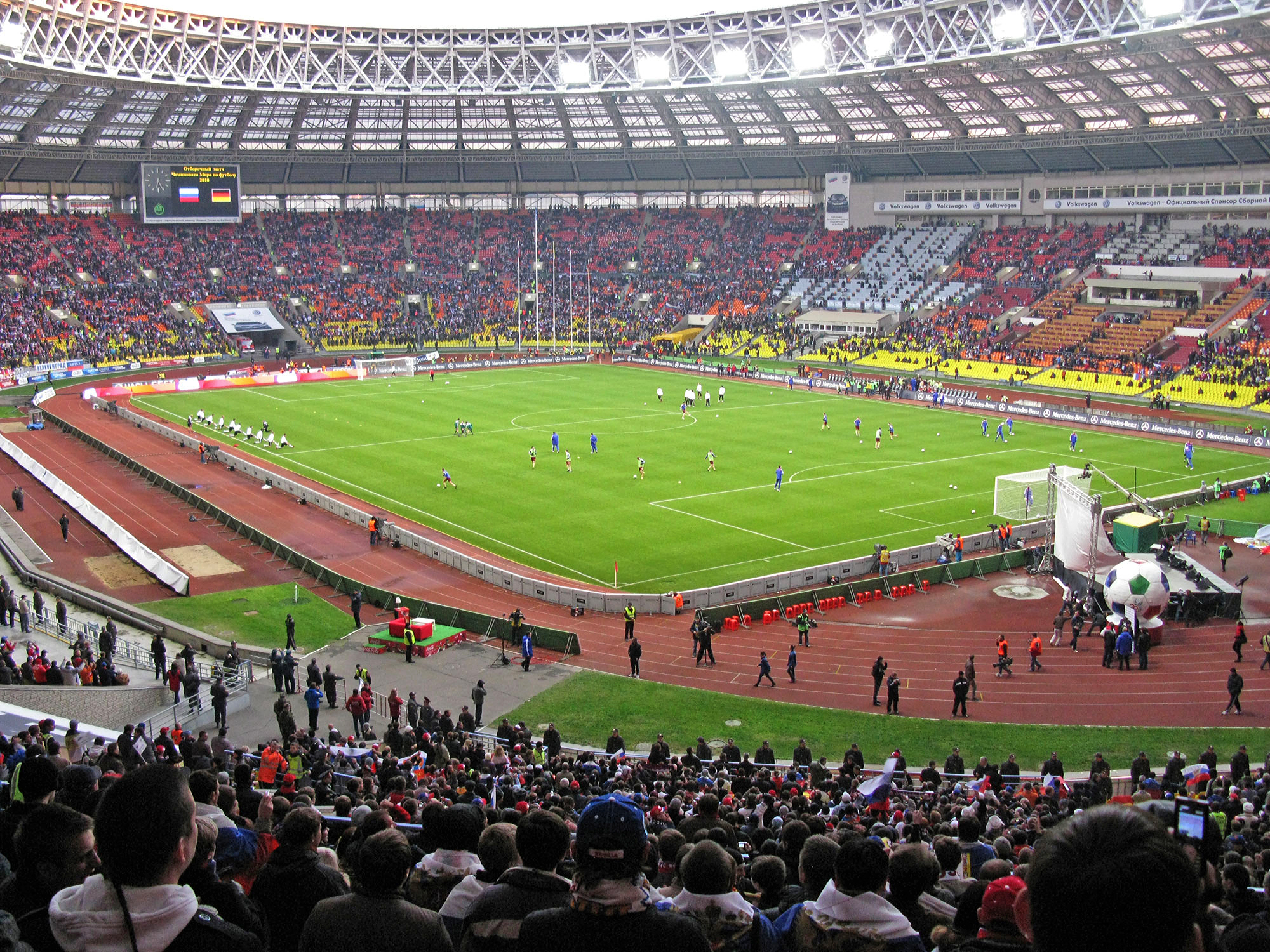
Luzhniki Stadium, located in Moscow, Russia, is the country's national stadium and a symbol of Russian sporting excellence. Originally built in 1956, the stadium has undergone extensive renovations, most notably for the 2018 FIFA World Cup. Its design, with a distinctive roof and modern amenities, makes it a versatile venue capable of hosting a variety of sports and events. Luzhniki has been the stage for numerous historic moments, including the 1980 Summer Olympics and the 2008 UEFA Champions League Final. The stadium's location in the heart of Moscow makes it easily accessible, allowing visitors to explore the vibrant culture and history of the city. Luzhniki Stadium is more than just a venue; it's a celebration of Russian sports and culture, offering fans an unforgettable experience.
10. San Mamés: The Modern Pride of Bilbao (53,289)
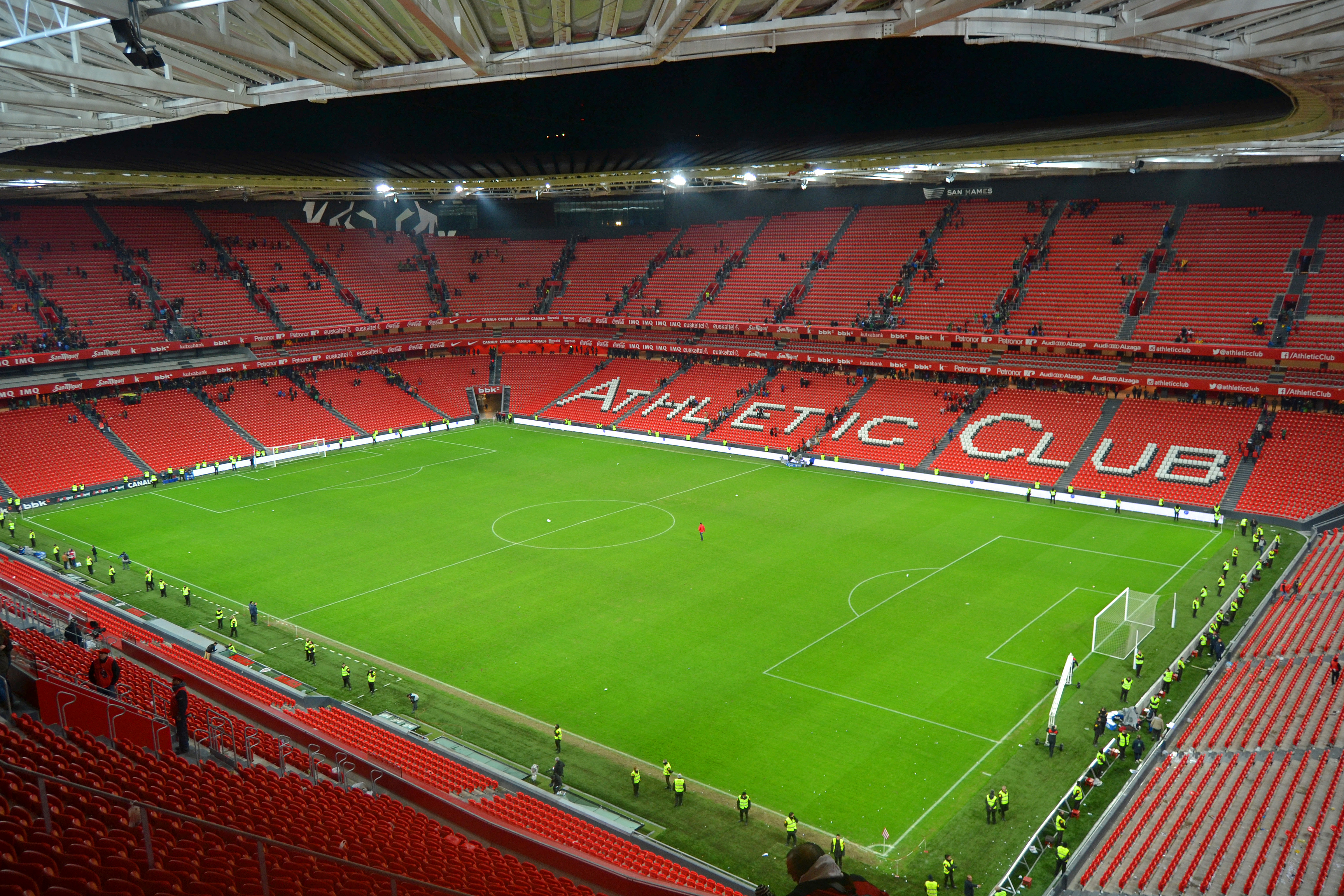
San Mamés, located in Bilbao, Spain, is a modern masterpiece and the home of Athletic Club. Opened in 2013, the stadium is renowned for its innovative design, which combines modern architecture with traditional Basque elements. The stadium's facade, with its unique lighting system, creates a striking visual effect that reflects the club's identity. San Mamés is more than just a stadium; it's a symbol of Bilbao's rich football heritage and the passion of its fans. The stadium's interior is designed to maximize visibility and comfort, ensuring that every spectator has an exceptional view of the action. A visit to San Mamés is not complete without exploring the Athletic Club Museum, which offers an interactive journey through the club's history, showcasing its numerous domestic and international triumphs. San Mamés is a testament to the innovation and success of Athletic Club, offering fans an unforgettable experience.
11. Celtic Park: The Fortress of Glasgow (60,832)
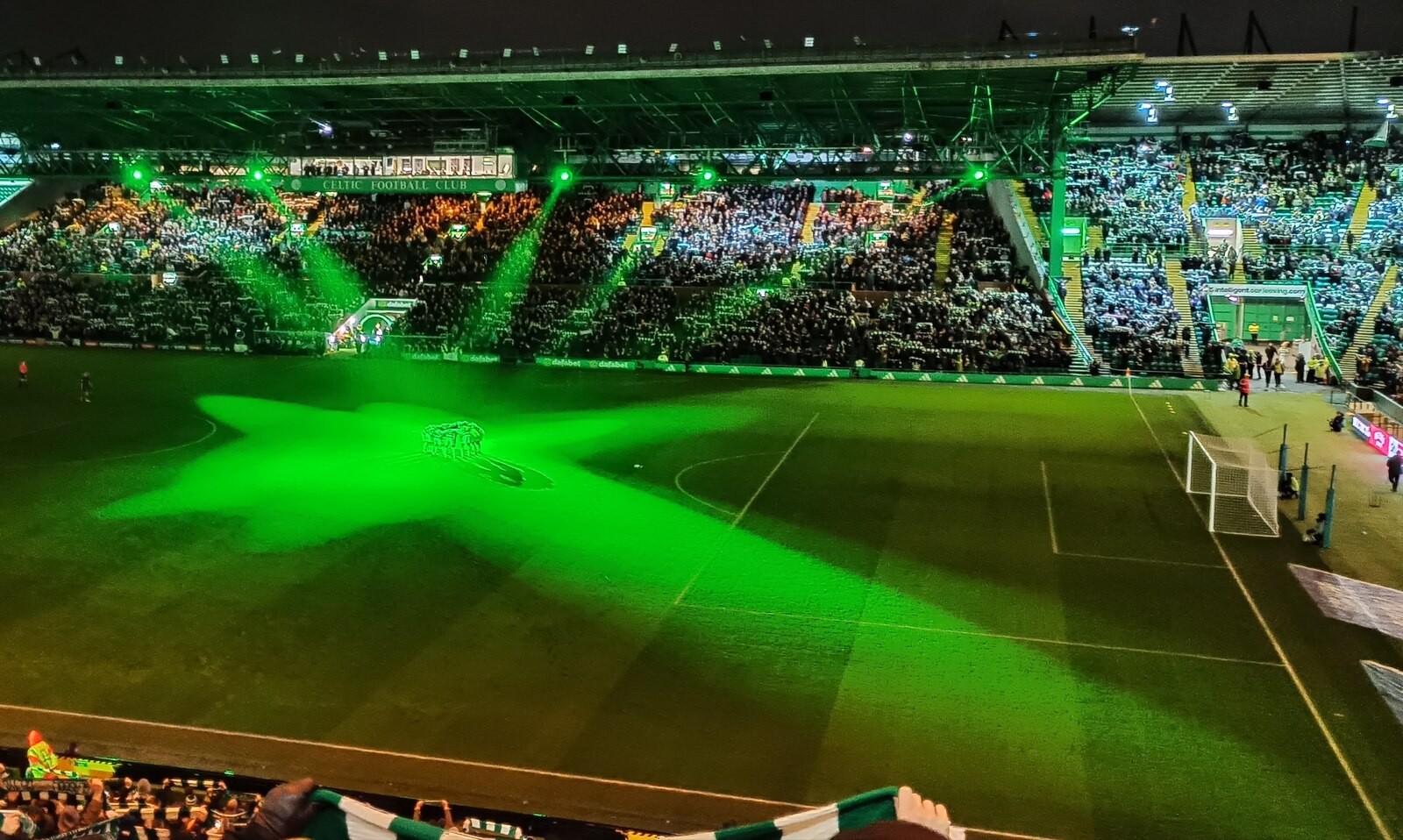
Celtic Park, located in Glasgow, Scotland, is the iconic home of Celtic FC and is affectionately known as "Paradise." Opened in 1892, the stadium has witnessed the rise of legendary players and historic matches that have shaped the club's legacy. Its design, with the towering stands and passionate fans, creates an imposing presence that reflects the club's stature in Scottish football. Celtic Park is more than just a stadium; it's a symbol of Celtic FC's rich history and tradition. Visitors can take a guided tour to explore the stadium's inner workings, including the players' tunnel, dressing rooms, and the museum, which houses a vast collection of memorabilia and trophies. The atmosphere at Celtic Park is electric, with fans creating a sea of green and singing passionately for their team. A visit to Celtic Park is a pilgrimage for any Celtic supporter, offering a glimpse into the club's storied past and vibrant present.
12. Estádio da Luz: The Light of Lisbon (64,642)
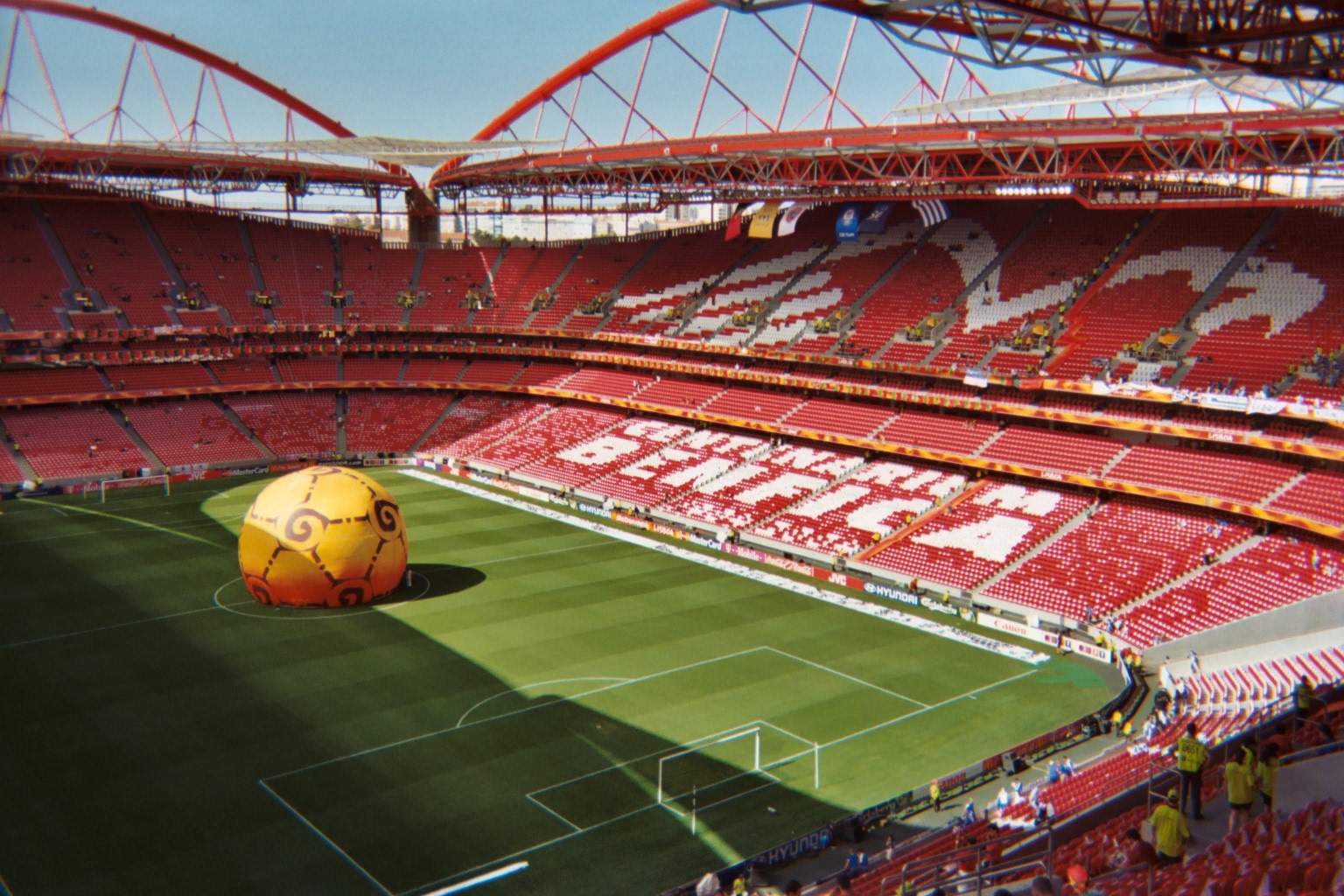
Estádio da Luz, located in Lisbon, Portugal, is the home of SL Benfica and a symbol of Portuguese football excellence. Opened in 2003, the stadium is renowned for its modern design and state-of-the-art facilities. The stadium's interior is designed to maximize visibility and comfort, ensuring that every spectator has an exceptional view of the action. Estádio da Luz is more than just a stadium; it's a celebration of SL Benfica's rich history and tradition. Visitors can take a guided tour to explore the stadium's inner workings, including the players' tunnel, dressing rooms, and the museum, which houses a vast collection of memorabilia and trophies. The atmosphere at Estádio da Luz is electric, with fans creating a sea of red and singing passionately for their team. A visit to Estádio da Luz is a pilgrimage for any SL Benfica supporter, offering a glimpse into the club's storied past and vibrant present.
13. Veltins-Arena – Gelsenkirchen, Germany (62,271)
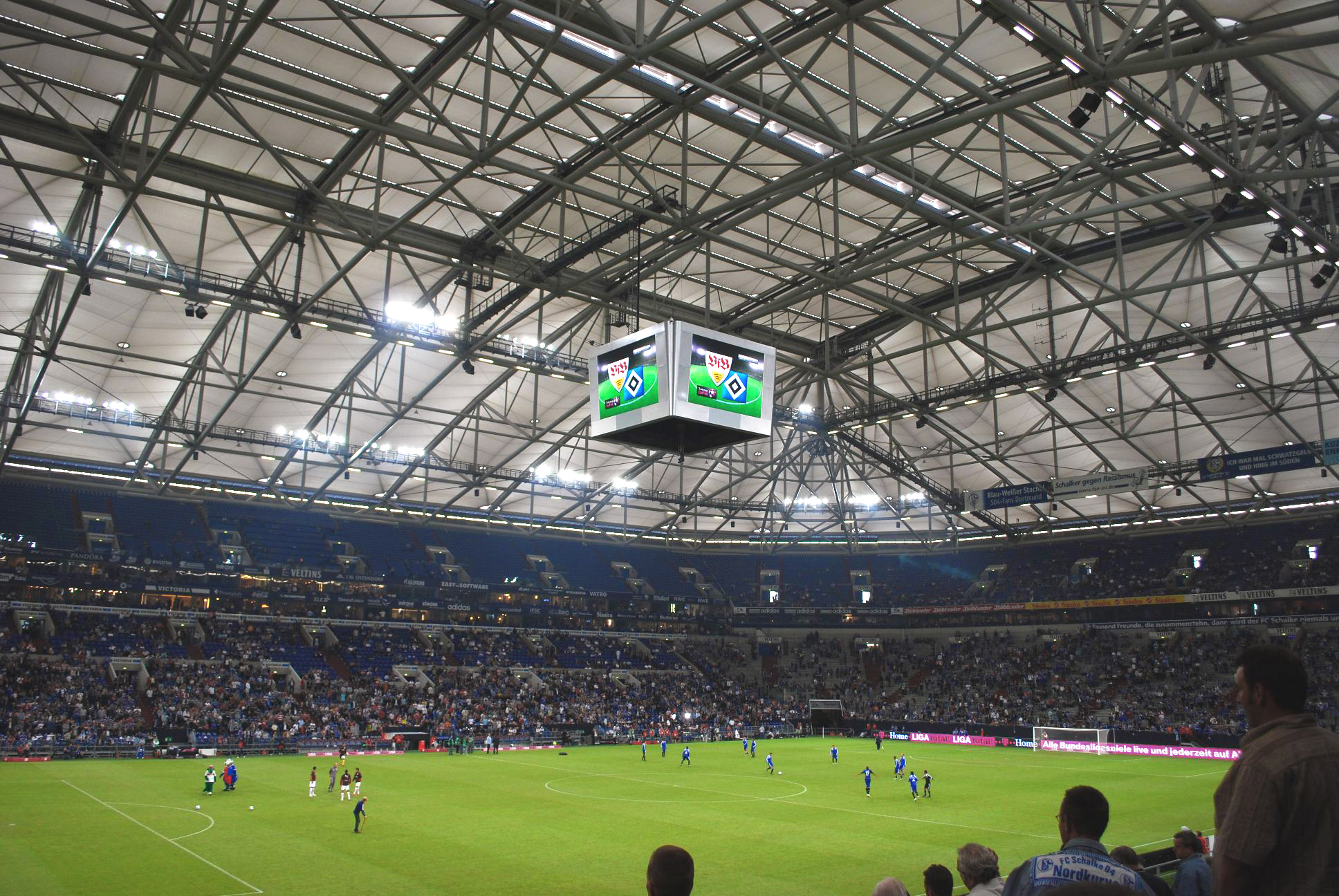
The Veltins-Arena, home to FC Schalke 04, is a marvel of modern stadium design. Located in Gelsenkirchen, Germany, it opened in 2001 and is renowned for its innovative features, including a retractable roof and a slide-out pitch. This allows for optimal playing conditions and versatile use of the space for concerts and other events. The stadium seats 62,271 fans and offers exceptional sightlines from every angle. Known for its passionate supporters, the arena becomes a fortress on match days, with the Schalke faithful creating an electric atmosphere. The Veltins-Arena also boasts modern amenities, such as a giant video screen and extensive food and beverage options. Its commitment to sustainability, including energy-efficient facilities, sets it apart as an environmentally conscious venue. From Bundesliga matches to international tournaments, the Veltins-Arena is a cornerstone of German football and a must-visit for sports enthusiasts.
14. Ibrox Stadium – Glasgow, Scotland (50,817)
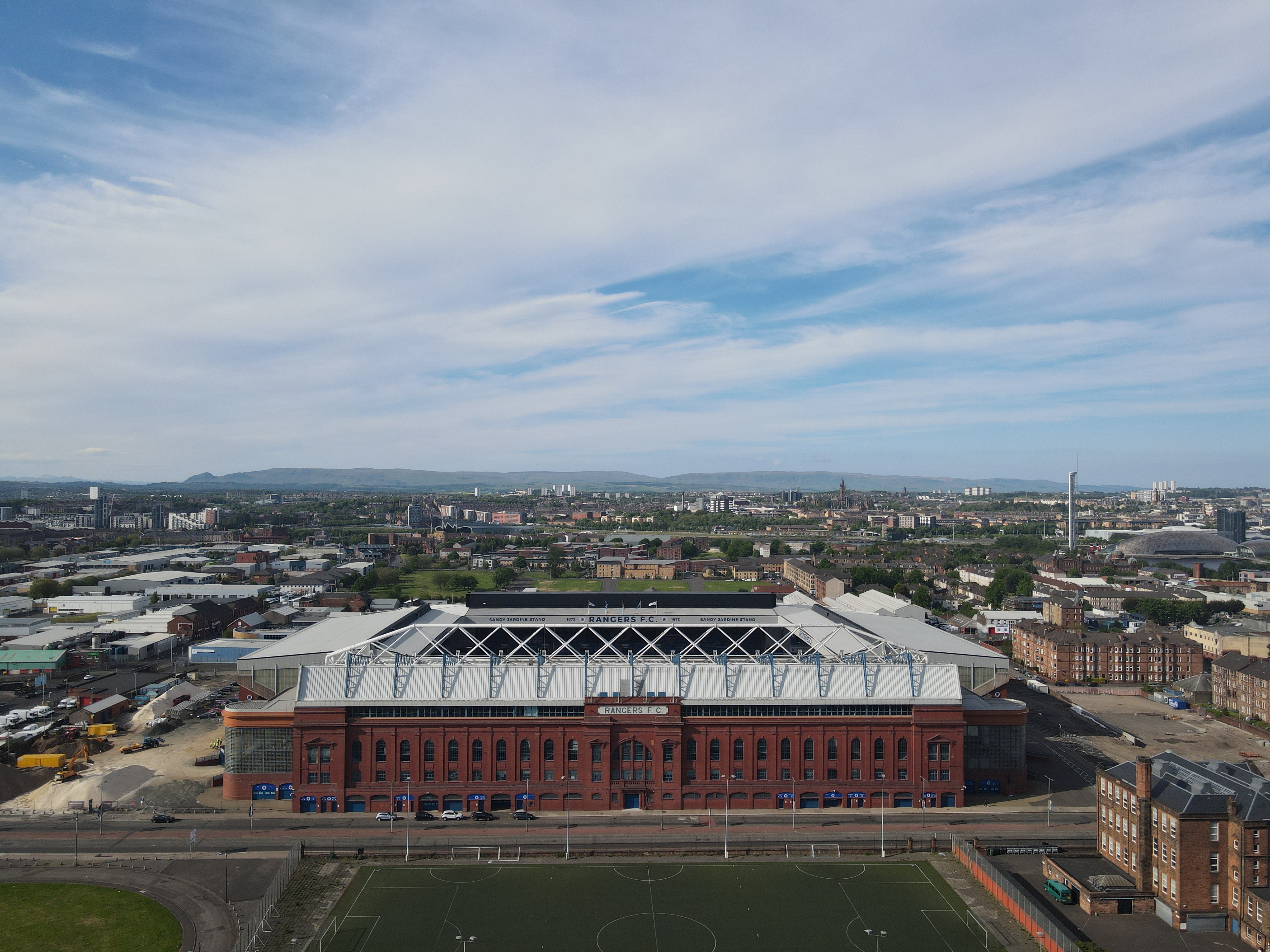
Ibrox Stadium, located in Glasgow, Scotland, is the historic home of Rangers FC. Opened in 1899, it is one of the oldest football venues in Europe, steeped in tradition and history. With a capacity of 50,817, the stadium’s design blends classic architectural elements with modern upgrades, including enhanced seating and hospitality areas. The iconic red-brick facade of the Main Stand is a testament to its rich heritage. On match days, Ibrox comes alive as Rangers fans, known for their fervent support, fill the stands with songs and chants. The atmosphere during an Old Firm derby against Celtic is particularly intense, showcasing the deep rivalry between the two clubs. Visitors can explore the Rangers Museum, which highlights the team’s illustrious history and achievements. Ibrox Stadium is more than a venue; it’s a symbol of pride for Rangers supporters and a cornerstone of Scottish football.
15. Philips Stadion – Eindhoven, Netherlands (35,000)
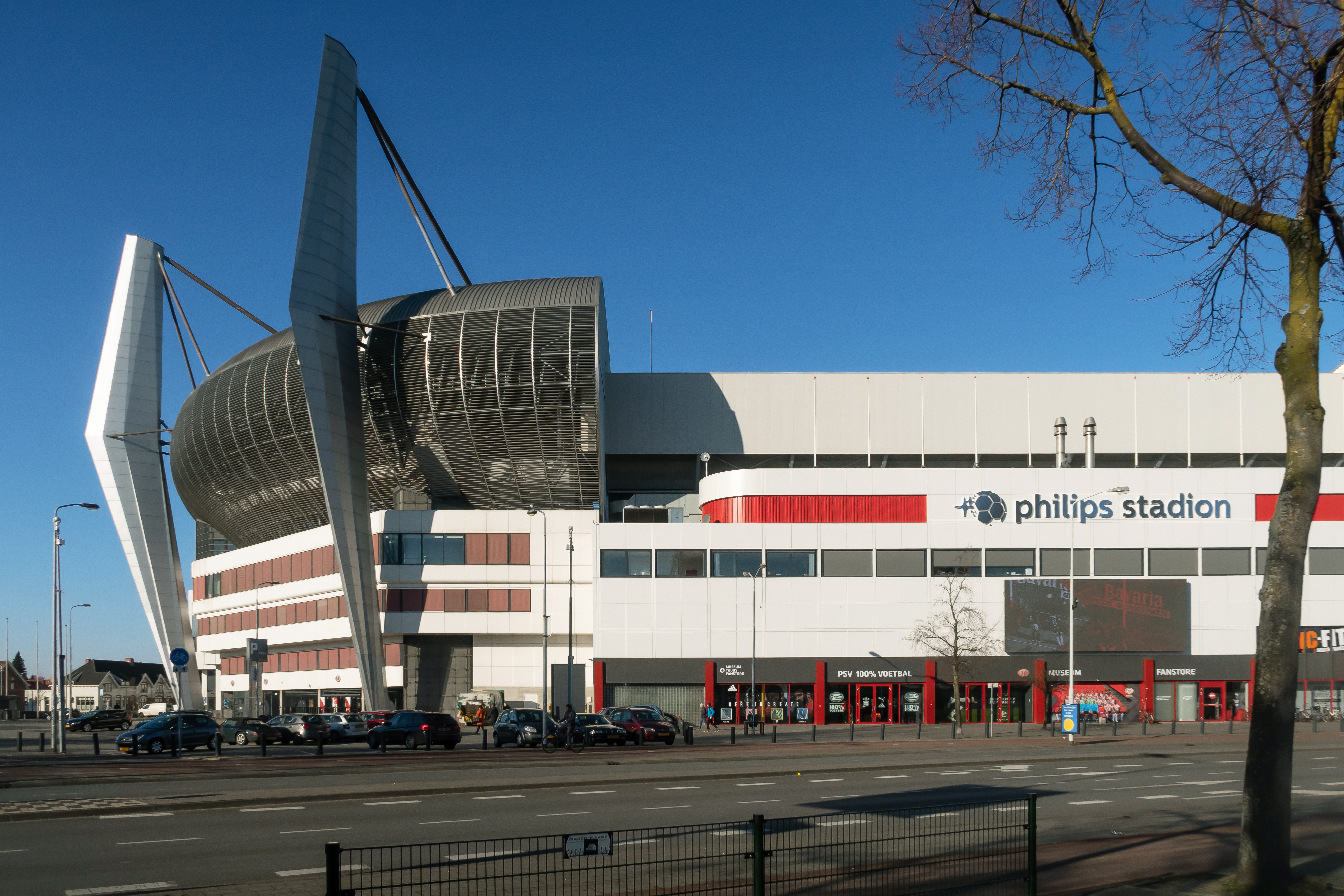
Philips Stadion, home to PSV Eindhoven, is a symbol of Dutch football excellence. Located in the city of Eindhoven, the stadium has a capacity of 35,000 and offers an intimate and electrifying atmosphere. Opened in 1913, it has undergone several renovations to become one of the most modern stadiums in the Netherlands. Known for its close proximity to the pitch, fans are brought right into the action, making it an intimidating venue for visiting teams. The stadium also houses the PSV Museum, where visitors can learn about the club’s rich history, including its domestic and international triumphs. The Philips Stadion is not only a hub for football but also a center for community and cultural events. Its innovative design and passionate fanbase make it a must-visit destination for football lovers exploring the Netherlands.
16. Parken Stadium – Copenhagen, Denmark (38,065)
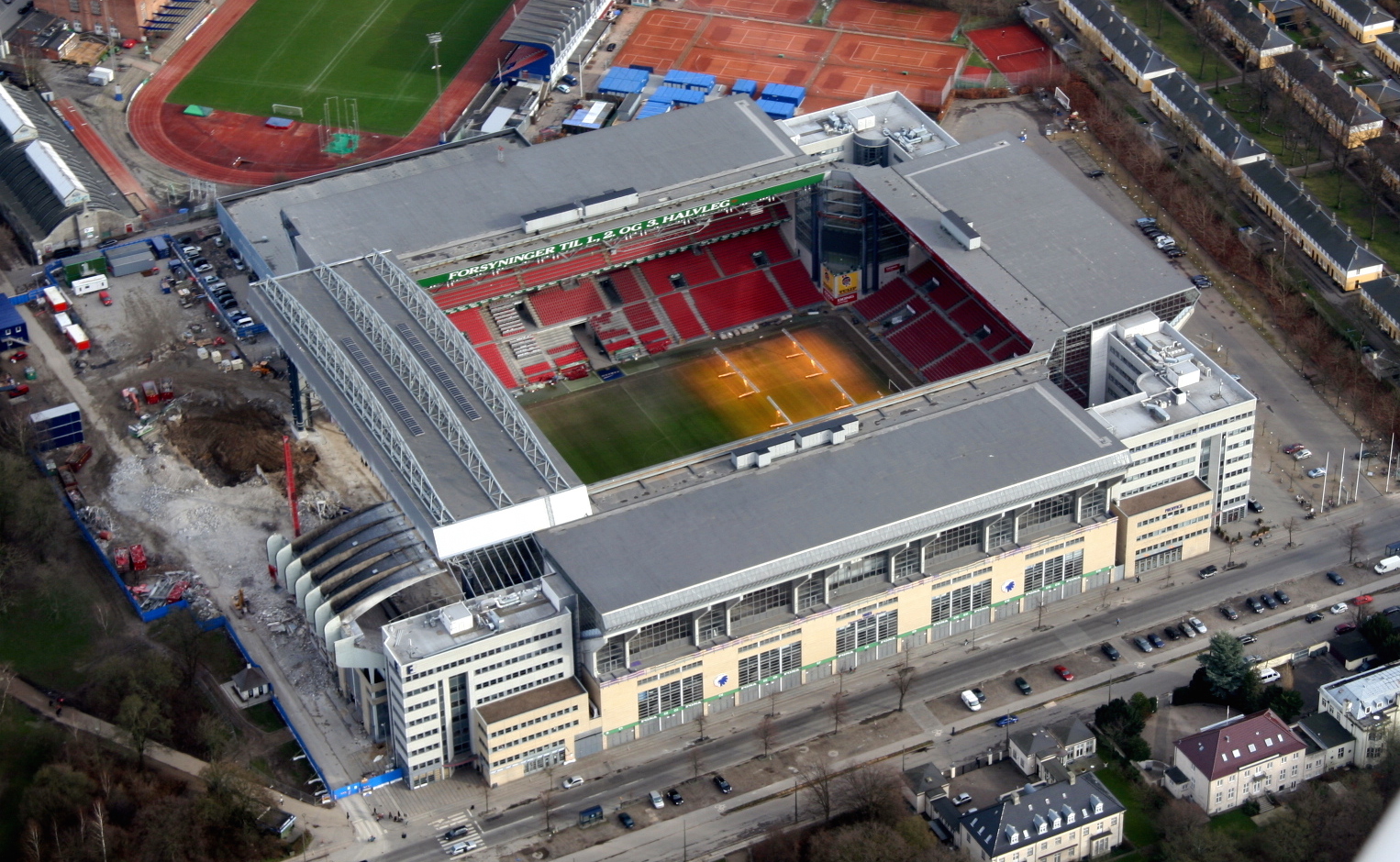
Parken Stadium, situated in the heart of Copenhagen, is Denmark’s national stadium and home to FC Copenhagen. Opened in 1992, it has a seating capacity of 38,065 and features a retractable roof, making it a versatile venue for sports and concerts alike. As the hub of Danish football, it has hosted countless national team matches and UEFA tournaments. The stadium’s compact design ensures excellent sightlines and an intense atmosphere, especially during high-stakes matches. Beyond football, Parken Stadium is a cultural landmark, hosting performances by artists such as Beyoncé and Ed Sheeran. Its central location allows visitors to easily explore Copenhagen’s vibrant culture and history before or after events. Parken Stadium is a testament to Denmark’s passion for sports and entertainment, offering a world-class experience for fans and tourists alike.
17. Volksparkstadion – Hamburg, Germany (57,000)
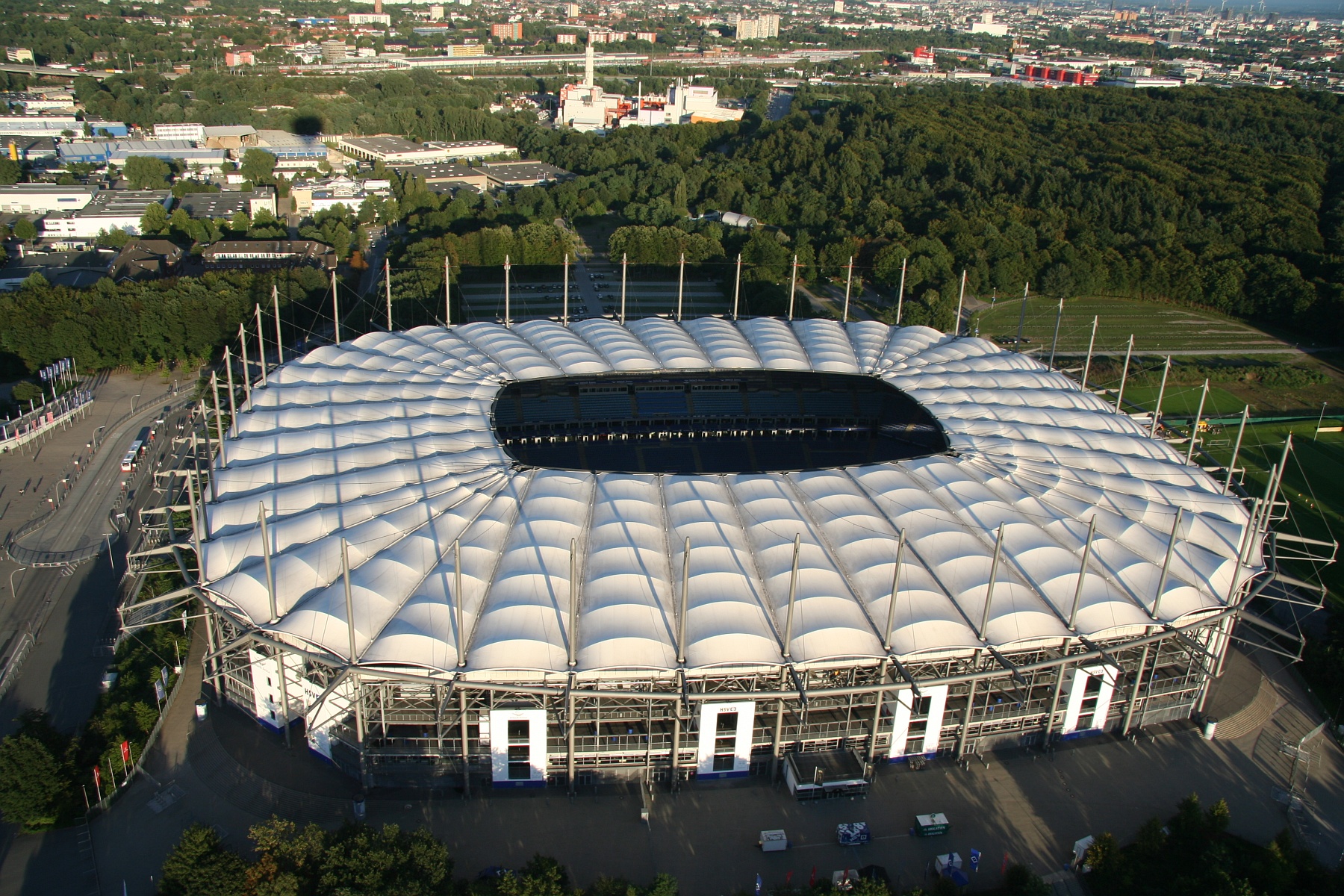
Volksparkstadion, located in Hamburg, Germany, is the iconic home of Hamburger SV. Opened in 1953, it has been renovated several times to meet modern standards and now seats 57,000 spectators. The stadium’s design emphasizes comfort and visibility, ensuring fans enjoy an immersive experience. Known for its electric atmosphere, particularly during Bundesliga matches, the Volksparkstadion becomes a fortress for Hamburger SV supporters. It has also hosted major international events, including FIFA World Cup matches and UEFA tournaments. The surrounding park and recreational facilities add to its appeal, making it a destination for locals and visitors alike. A tour of the stadium offers insights into its history and access to areas like the players’ tunnel and locker rooms. Volksparkstadion is a cherished landmark in Hamburg, representing the city’s love for football and its rich sporting culture.
18. Aviva Stadium – Dublin, Ireland (51,700)
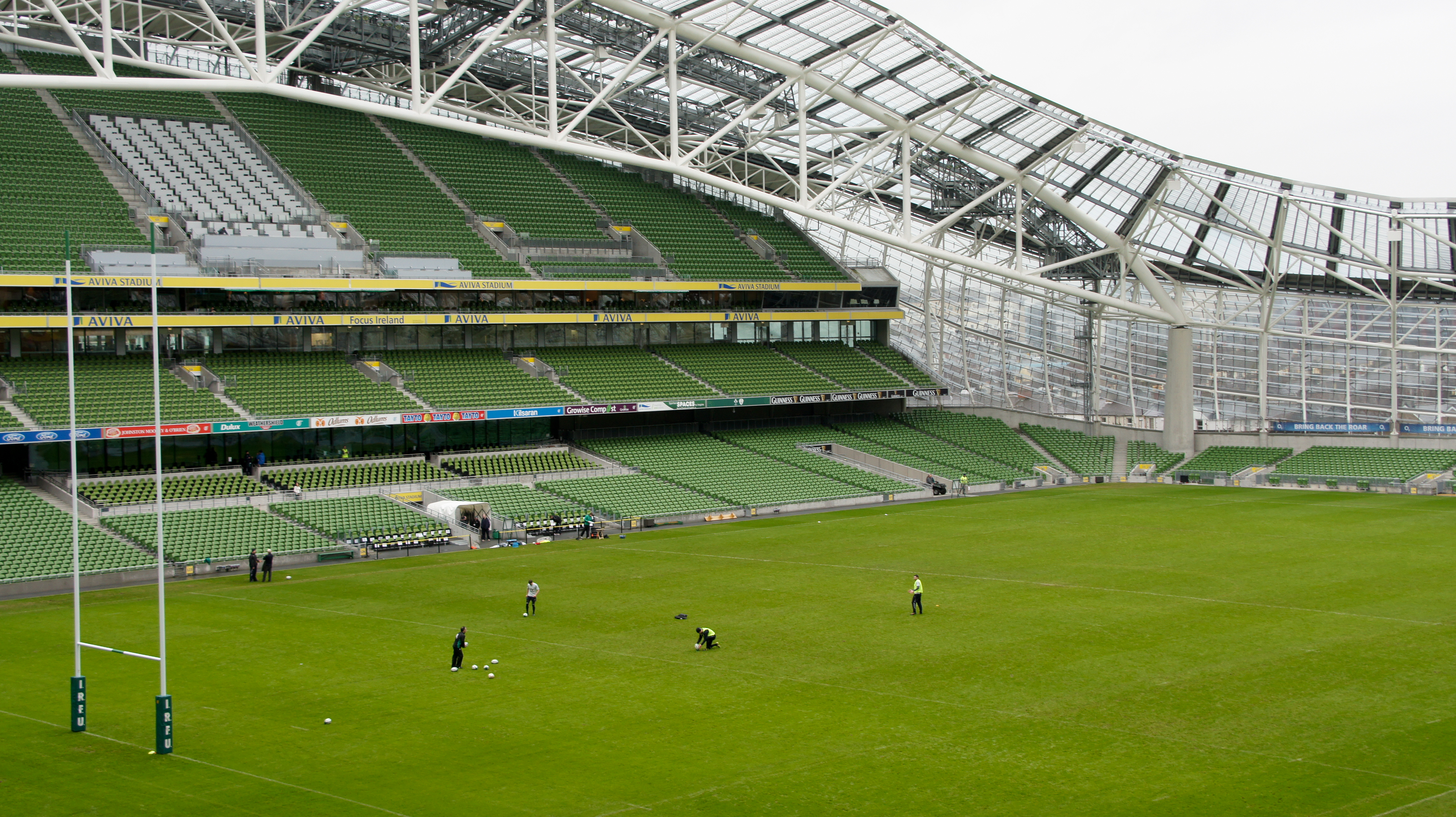
Aviva Stadium, located in Dublin, Ireland, is a modern masterpiece and the national stadium for football and rugby. Opened in 2010, it replaced the historic Lansdowne Road and seats 51,700 spectators. The stadium’s unique bowl design and curved roof provide an aesthetically stunning appearance while enhancing acoustics. Home to the Republic of Ireland’s football team and the Irish rugby team, it has hosted numerous international fixtures and high-profile events, including UEFA and Six Nations matches. The stadium’s state-of-the-art facilities and sustainable design reflect Ireland’s commitment to innovation. Located near Dublin’s city center, Aviva Stadium offers visitors the opportunity to experience Irish culture and hospitality while enjoying world-class sports. Its iconic status makes it a must-visit destination for fans of football, rugby, and cutting-edge architecture.
19. Olympiastadion – Berlin, Germany (74,475)
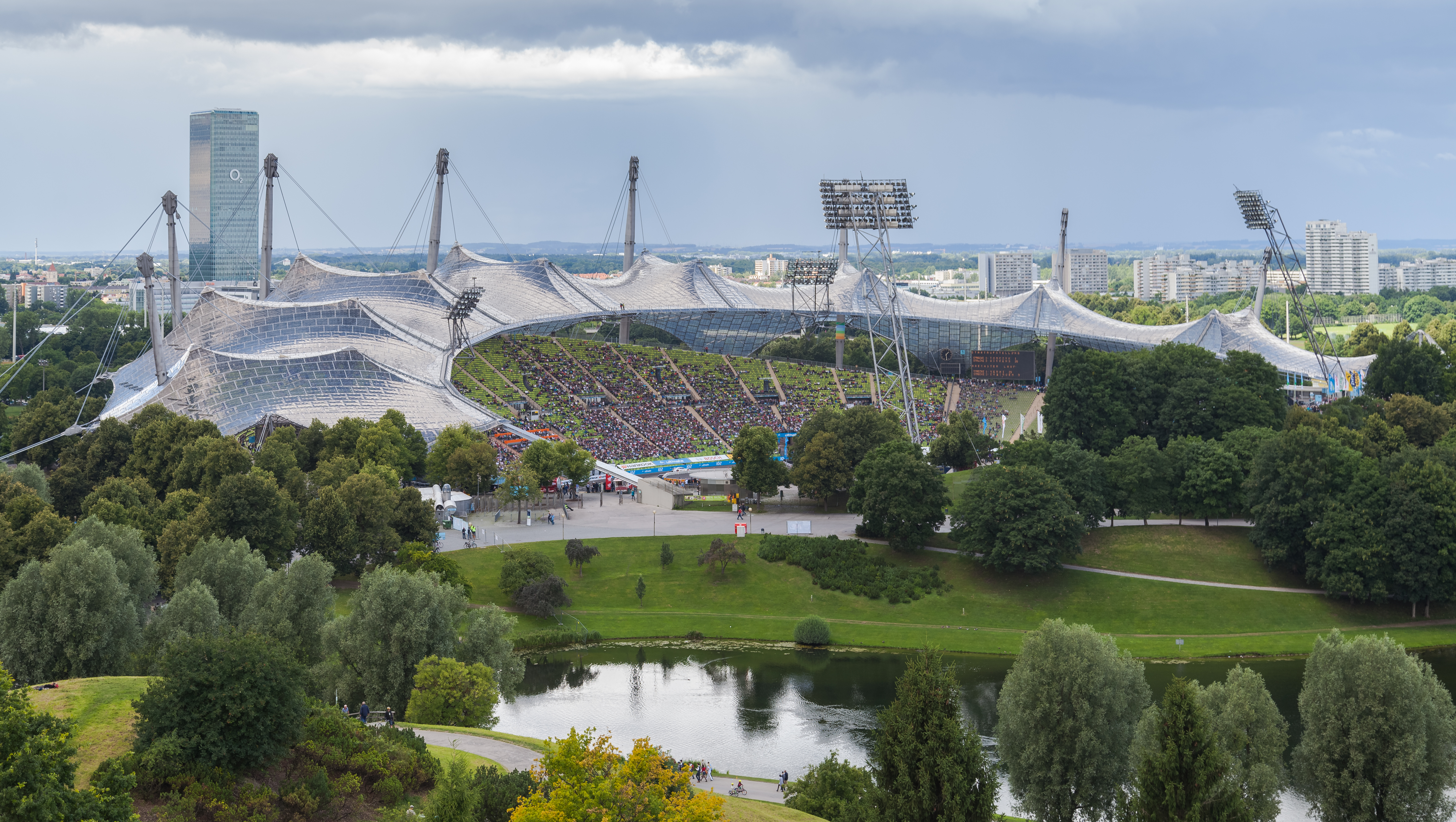
The Olympiastadion in Berlin is a historic landmark and one of Germany’s most iconic stadiums. Built for the 1936 Summer Olympics, it has since undergone multiple renovations, most notably for the 2006 FIFA World Cup. With a seating capacity of 74,475, it serves as the home ground for Hertha Berlin and hosts the DFB-Pokal final annually. The stadium’s design combines classical architecture with modern upgrades, including a distinctive blue running track that adds to its visual appeal. The Olympiastadion has been the stage for numerous memorable events, including the 2006 FIFA World Cup Final and concerts by global superstars. Surrounded by the historic Olympic Park, the stadium offers visitors a chance to explore its rich history through guided tours. Whether attending a football match, a track-and-field event, or a concert, the Olympiastadion provides an unforgettable experience steeped in history and culture.
20. Friends Arena – Stockholm, Sweden (50,000)
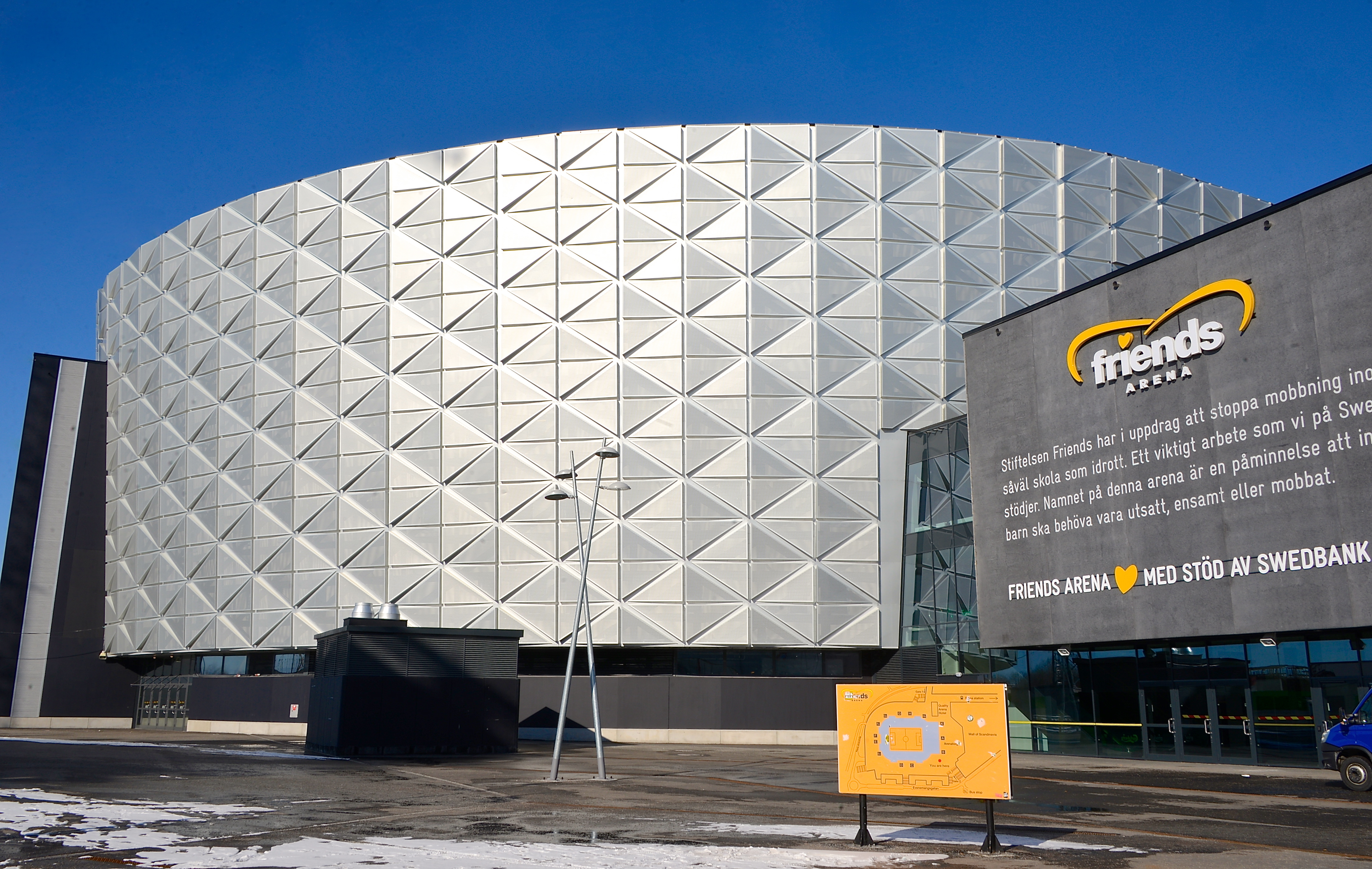
Friends Arena, located in Stockholm, is Sweden’s national stadium and a symbol of modern Scandinavian design. Opened in 2012, it has a capacity of 50,000 for sporting events and up to 65,000 for concerts. The stadium features a retractable roof, allowing it to host events year-round regardless of weather conditions. Friends Arena is the home of the Swedish national football team and AIK Fotboll and has hosted prestigious events such as the UEFA Europa League Final in 2017. Its state-of-the-art facilities include high-definition video screens, premium seating, and excellent acoustics, making it a top venue for sports and entertainment. Located in the Solna district, the arena is part of a larger complex with hotels, restaurants, and shopping, enhancing the visitor experience. Friends Arena is a testament to Sweden’s commitment to sustainability, offering fans a cutting-edge and environmentally friendly venue.
21. St. Jakob-Park – Basel, Switzerland (38,512)
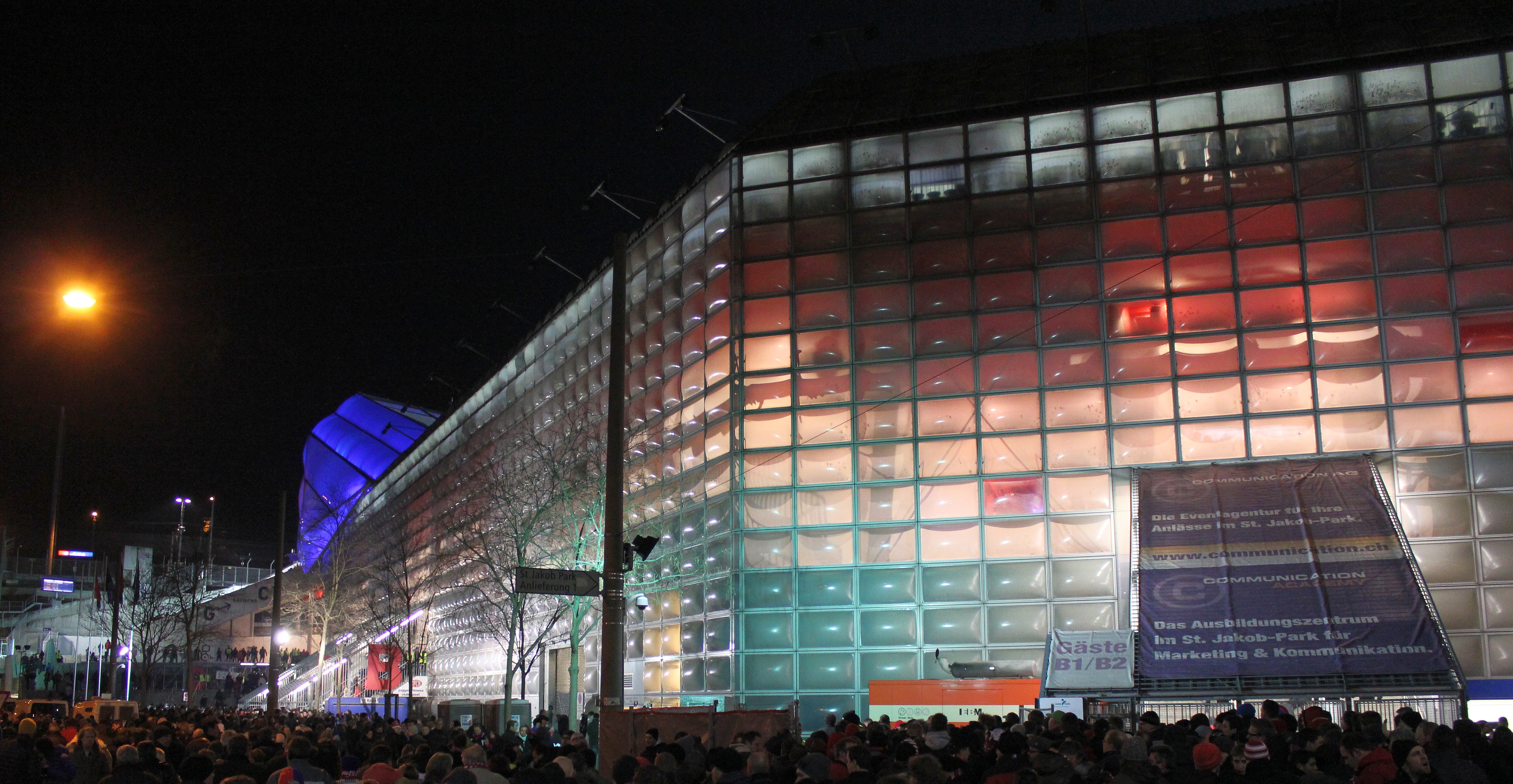
St. Jakob-Park, known as “Joggeli” to locals, is Switzerland’s largest stadium and the home of FC Basel. Located in Basel, it opened in 2001 and has a seating capacity of 38,512. The stadium’s modern architecture, designed by renowned firm Herzog & de Meuron, features a sleek glass facade that glows in different colors during events. St. Jakob-Park has hosted UEFA Euro matches and Champions League games, showcasing its suitability for high-profile events. The atmosphere inside the stadium is electric, with FC Basel’s passionate supporters creating a vibrant and welcoming environment. The venue also includes shops, restaurants, and a hotel, making it a multi-functional space for visitors. Surrounded by picturesque Swiss landscapes, St. Jakob-Park offers an excellent combination of cutting-edge design and natural beauty, making it a must-visit destination for football fans and architecture enthusiasts alike.
22. Puskás Aréna – Budapest, Hungary (67,215)
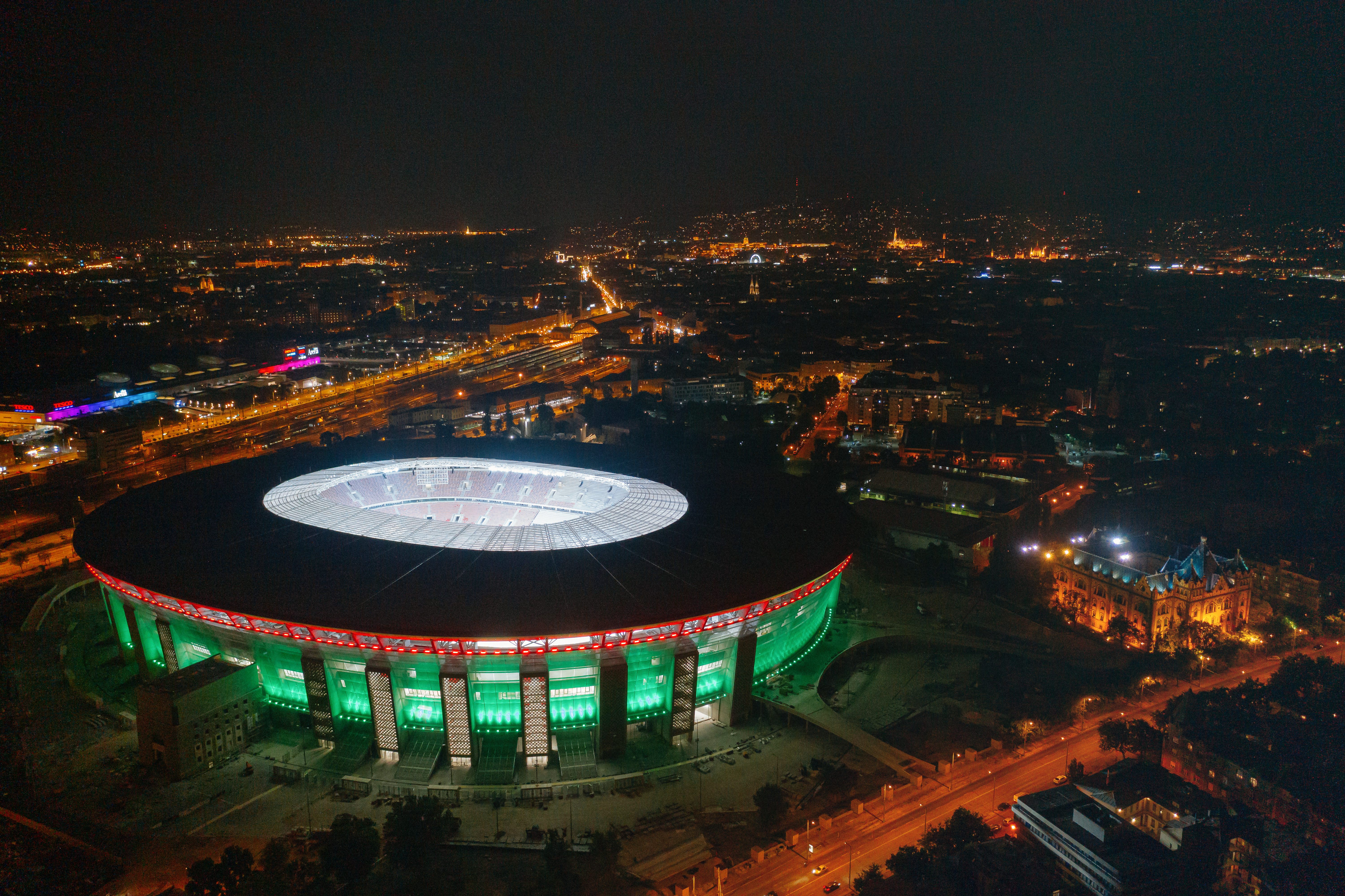
Puskás Aréna, named after the legendary Hungarian footballer Ferenc Puskás, is a state-of-the-art stadium in Budapest. Opened in 2019, it replaced the former Ferenc Puskás Stadium and has a capacity of 67,215. The venue combines modern design with elements that pay homage to its predecessor, including a tribute to Hungary’s rich football history. Puskás Aréna has hosted major events such as UEFA Euro 2020 matches and the UEFA Super Cup, showcasing its world-class facilities. Its central location in Budapest makes it easily accessible and offers visitors the chance to explore the city’s historic sites. The stadium’s atmosphere during matches is electric, with Hungarian fans known for their passionate support. Puskás Aréna is not just a stadium; it’s a symbol of Hungary’s football heritage and a testament to its commitment to hosting international sporting events.
23. Stade Vélodrome – Marseille, France (67,394)
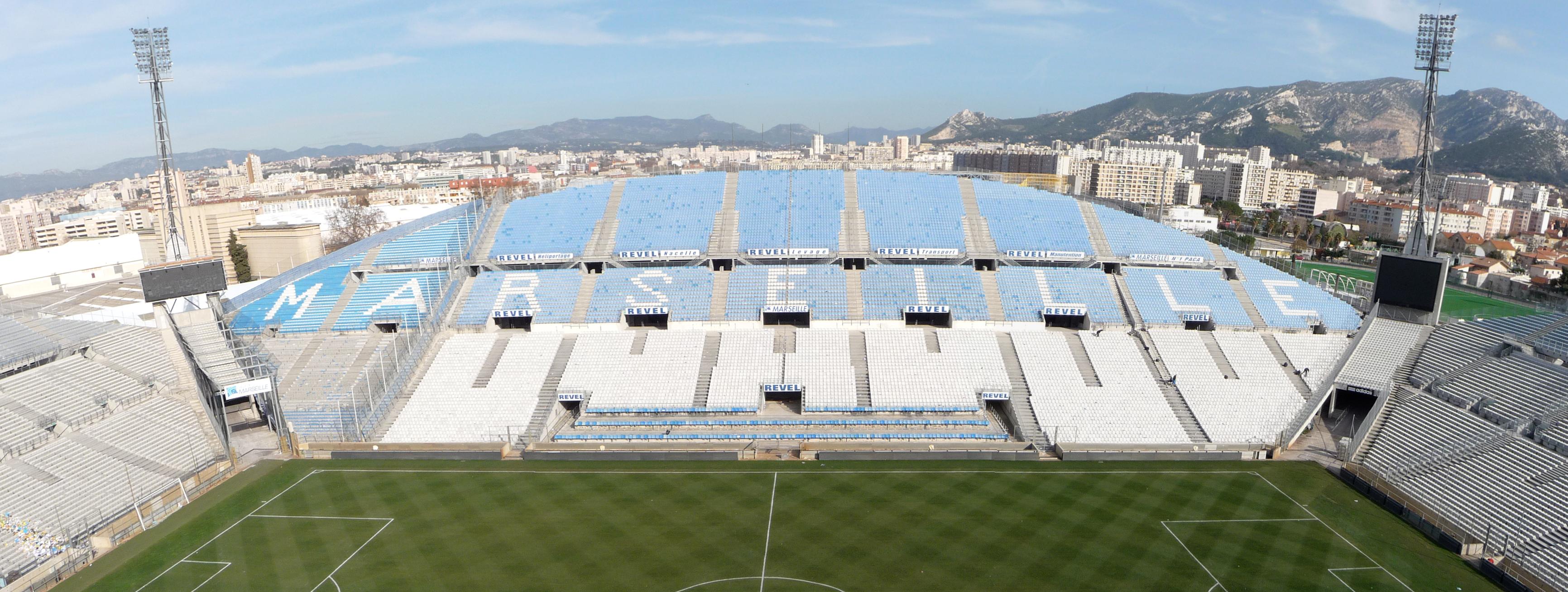
Stade Vélodrome, located in Marseille, is the home of Olympique de Marseille and one of France’s most iconic stadiums. Originally built in 1937, it underwent extensive renovations ahead of UEFA Euro 2016, transforming it into a modern, world-class venue. With a capacity of 67,394, it is the largest club stadium in France and a regular host of Ligue 1 matches and European competitions. The stadium’s standout feature is its undulating roof, which provides excellent acoustics and a striking visual profile. Stade Vélodrome has also hosted Rugby World Cup matches and international fixtures, making it a versatile venue. Situated near Marseille’s picturesque coastline, the stadium offers visitors a chance to enjoy the city’s vibrant culture and Mediterranean charm. The passionate Marseille supporters, known as “Les Ultras,” create a lively and unforgettable atmosphere, making Stade Vélodrome a must-visit destination for sports fans.
24. King Baudouin Stadium – Brussels, Belgium (50,093)
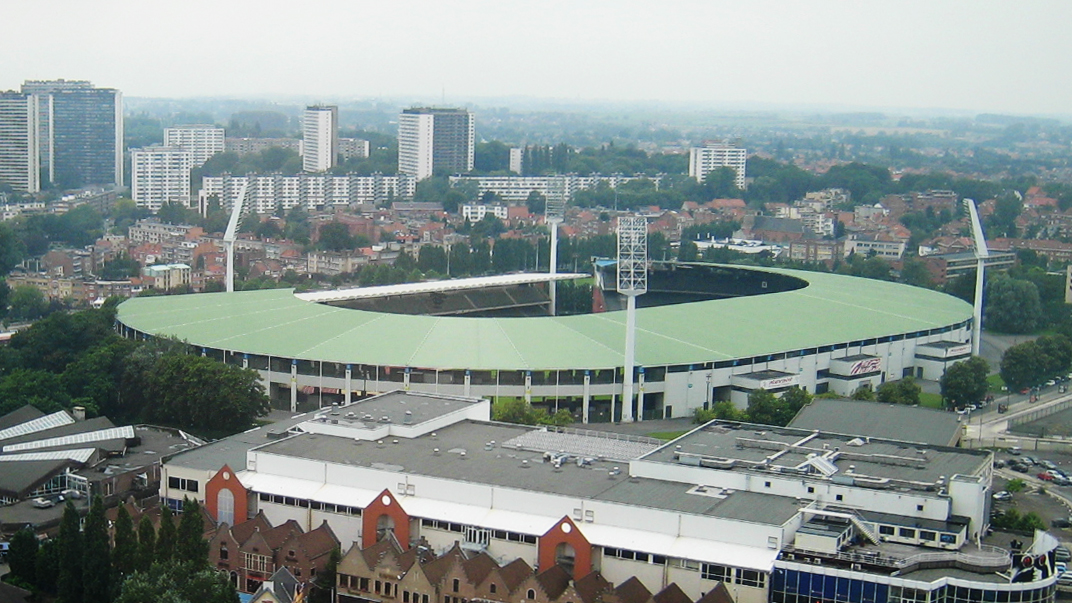
King Baudouin Stadium, located in Brussels, is Belgium’s national stadium and a historic venue for football and athletics. Originally built in 1930 as the Heysel Stadium, it was renamed in 1995 in honor of King Baudouin after significant renovations. With a capacity of 50,093, the stadium regularly hosts matches for the Belgian national football team, known as the Red Devils, as well as track-and-field events. King Baudouin Stadium is most famously remembered for hosting the 1985 European Cup Final, which led to significant safety reforms in stadium design. Today, it stands as a modern and versatile venue, capable of hosting concerts and cultural events in addition to sports. Located in the heart of Brussels, the stadium is easily accessible and offers visitors the chance to explore the city’s rich history and culinary delights. King Baudouin Stadium is a symbol of Belgium’s sporting heritage and a key venue for international events.
25. Stadio Olimpico – Rome, Italy (70,634)
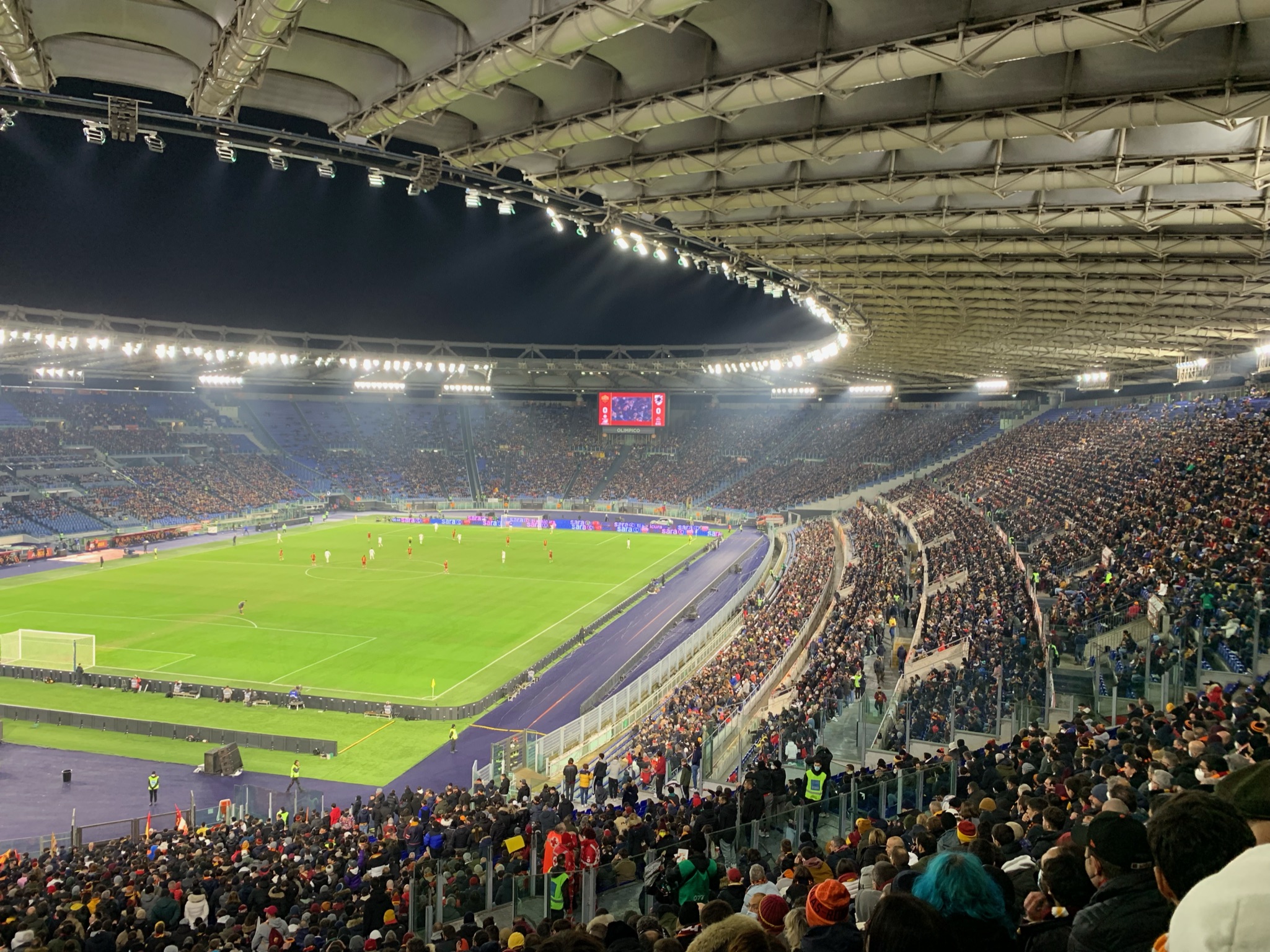
Stadio Olimpico stands as the beating heart of Roman sport, shared by two fierce Serie A rivals: AS Roma and Lazio. Built in 1937 and revamped for the 1990 FIFA World Cup, this colossal stadium blends historical gravitas with passionate energy. Its iconic bowl structure, surrounded by statues from the Fascist era, makes it a visually striking venue steeped in Italy’s complex past. Whether it’s a fiery derby or a major European final, the atmosphere here is operatic—roaring crowds, choreographed tifos, and smoke-filled skies. Located in Rome’s Foro Italico sports complex, it’s more than a matchday destination—it’s an experience of sport, history, and Roman pride rolled into one.
26. Stadion Wojska Polskiego – Warsaw, Poland (58,500)
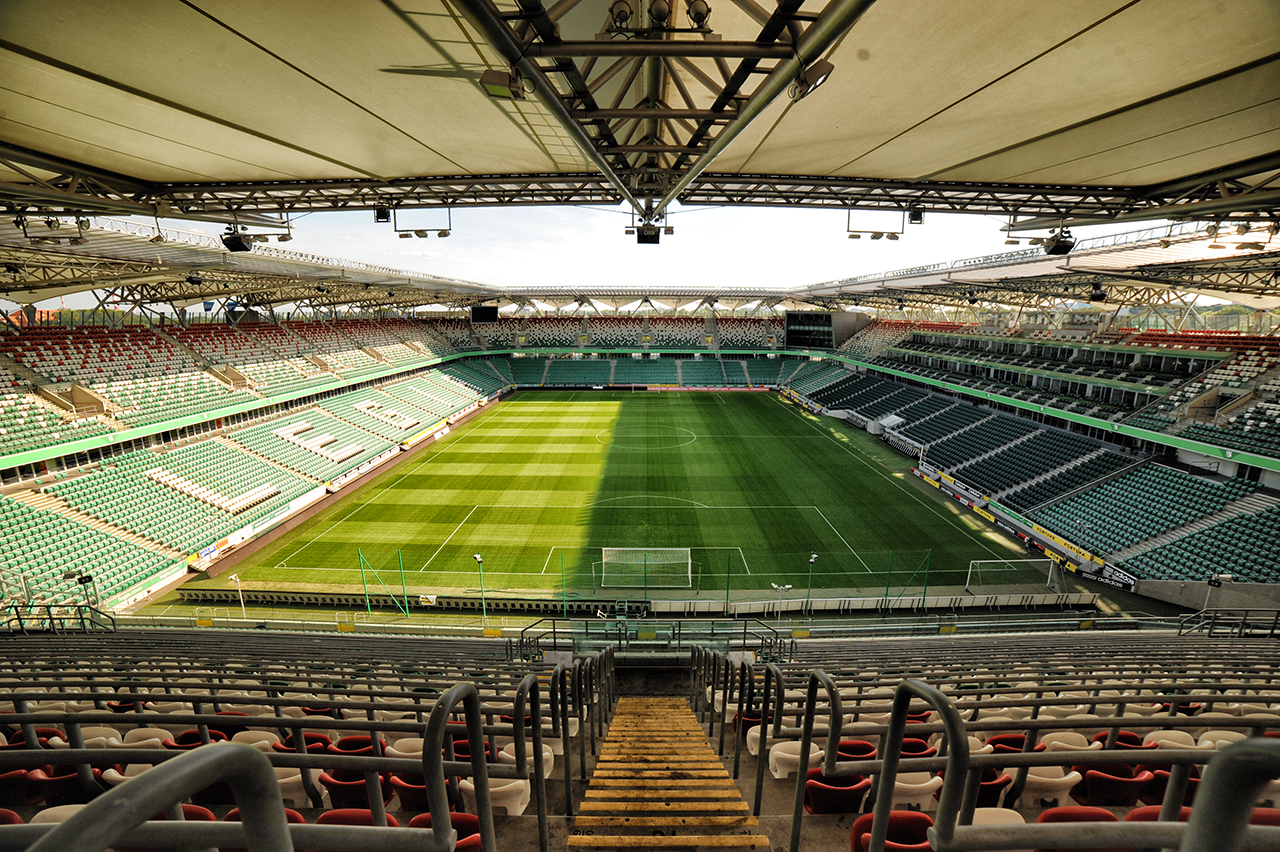
Also known as the Polish Army Stadium, this is the spiritual home of Legia Warsaw and a centerpiece of Polish football. With its steep stands and vibrant supporters’ section, the stadium delivers an intense, intimate matchday experience. Renovated in 2010, it now meets UEFA’s highest standards and regularly hosts national team fixtures and European competitions. But the real draw is the energy—Legia fans are among the most passionate in Europe, and their elaborate choreographies create a theatrical atmosphere few venues can rival. Nestled near Łazienki Park, the stadium offers visitors both a thrilling football experience and a gateway to Warsaw’s cultural heart.
27. Stadion Rajko Mitić – Belgrade, Serbia (53,000)
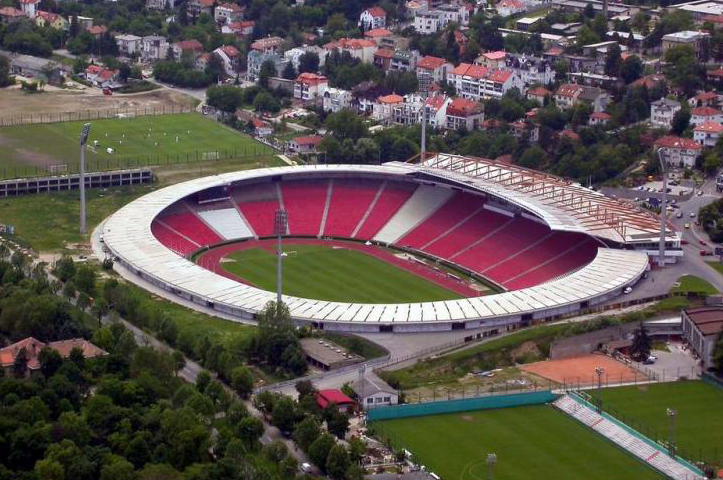
Better known as “Marakana,” Serbia’s largest stadium is home to Red Star Belgrade and an icon of Balkan football history. Opened in 1963, it hosted Red Star’s legendary 1991 European Cup run and continues to echo with the intensity of its storied past. The stadium is infamous for its thunderous noise, flares, and die-hard fans who turn every match into a fiery spectacle. While not the most modern, its atmosphere is unmatched—raw, relentless, and unapologetically passionate. For those seeking the soul of Eastern European football, this is hallowed ground, where history, identity, and rivalry collide under floodlights.
28. Arena Națională – Bucharest, Romania (55,634)
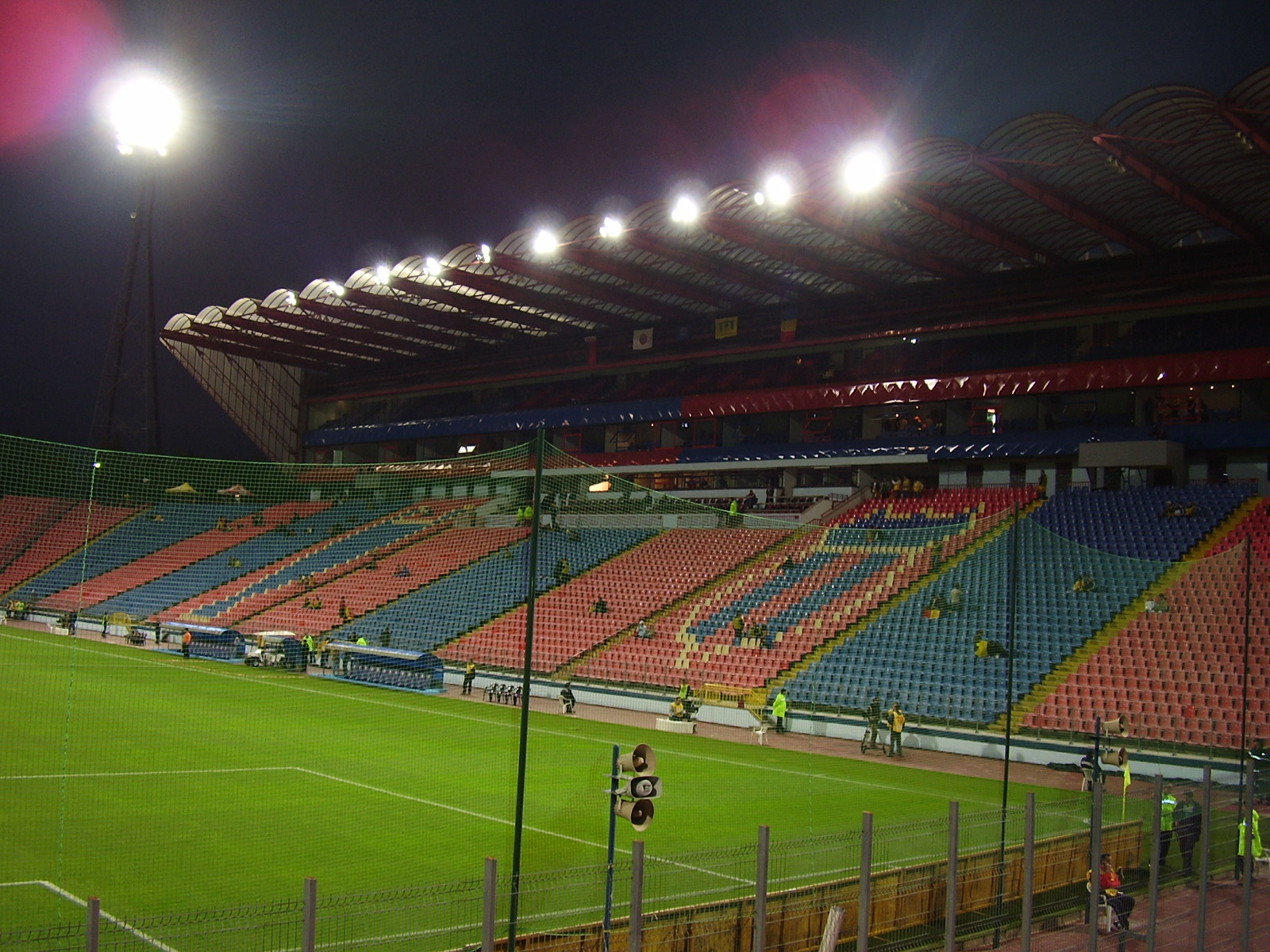
Arena Națională is Romania’s largest stadium and a beacon of modernity in Bucharest. Opened in 2011, it plays host to the Romanian national team, as well as major domestic and European matches, often featuring local giants FCSB. With a retractable roof, cutting-edge facilities, and excellent acoustics, the arena is one of Eastern Europe’s most advanced venues. It gained international acclaim during UEFA Euro 2020 and continues to attract large-scale concerts and cultural events. Its location in the heart of the city makes it easily accessible, and the lively Romanian fans ensure that whether you come for football or music, you leave with adrenaline still pumping.
29. Estadio Benito Villamarín – Seville, Spain (60,721)
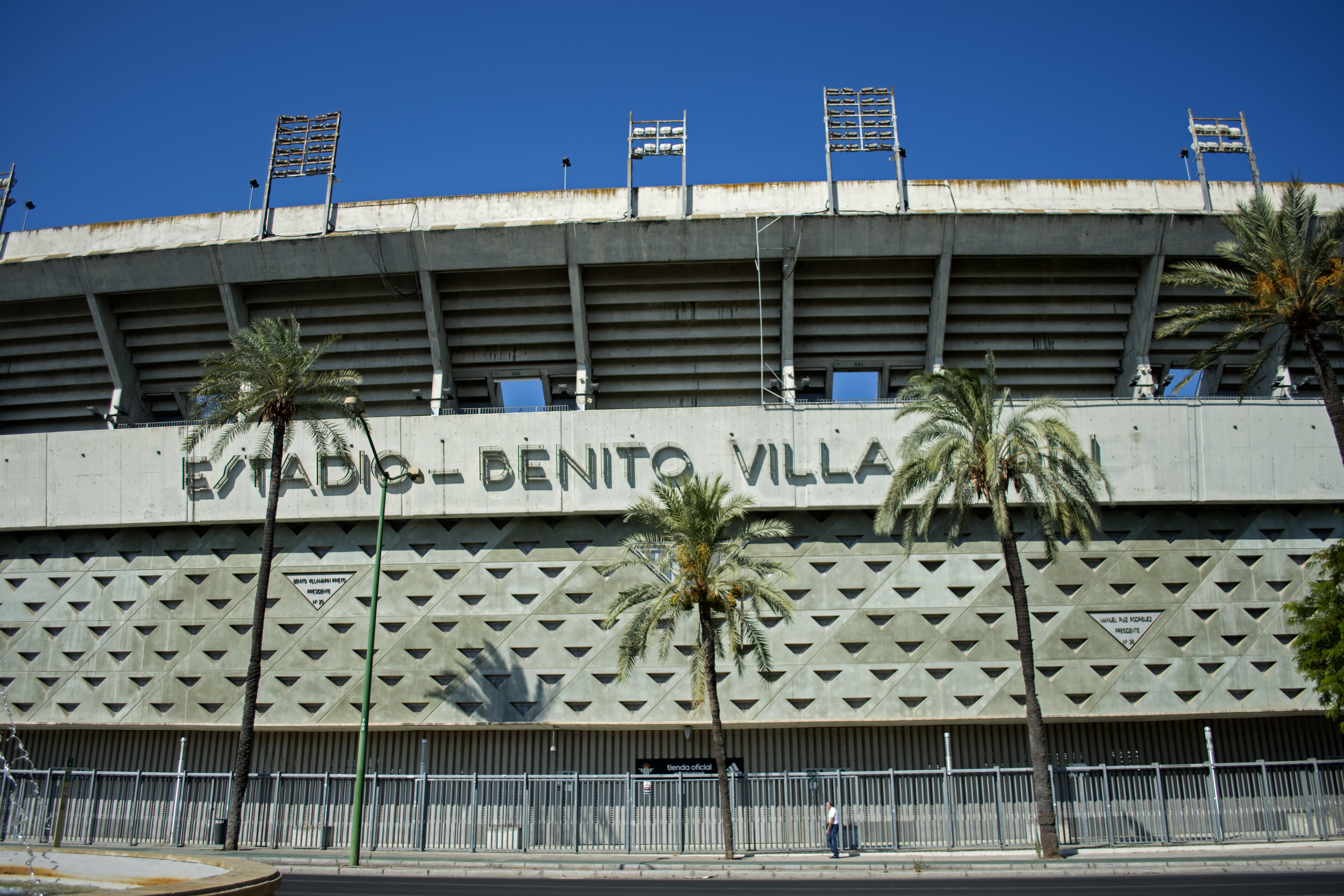
Located in sun-soaked Seville, Estadio Benito Villamarín is the proud home of Real Betis—and one of Spain’s largest and most vibrant football venues. With its towering stands and emerald sea of supporters, matchdays here are a festival of color and noise. The stadium was expanded multiple times since its 1929 debut and now offers an electric atmosphere that rivals any La Liga ground. It’s not just about football—it’s about community, culture, and Andalusian pride. When Betis scores, the roar from Villamarín is less a cheer and more a sonic wave. Add in tapas, flamenco, and the energy of Seville itself, and this stadium becomes a bucket-list destination for every football lover.
Where Passion Echoes Loudest
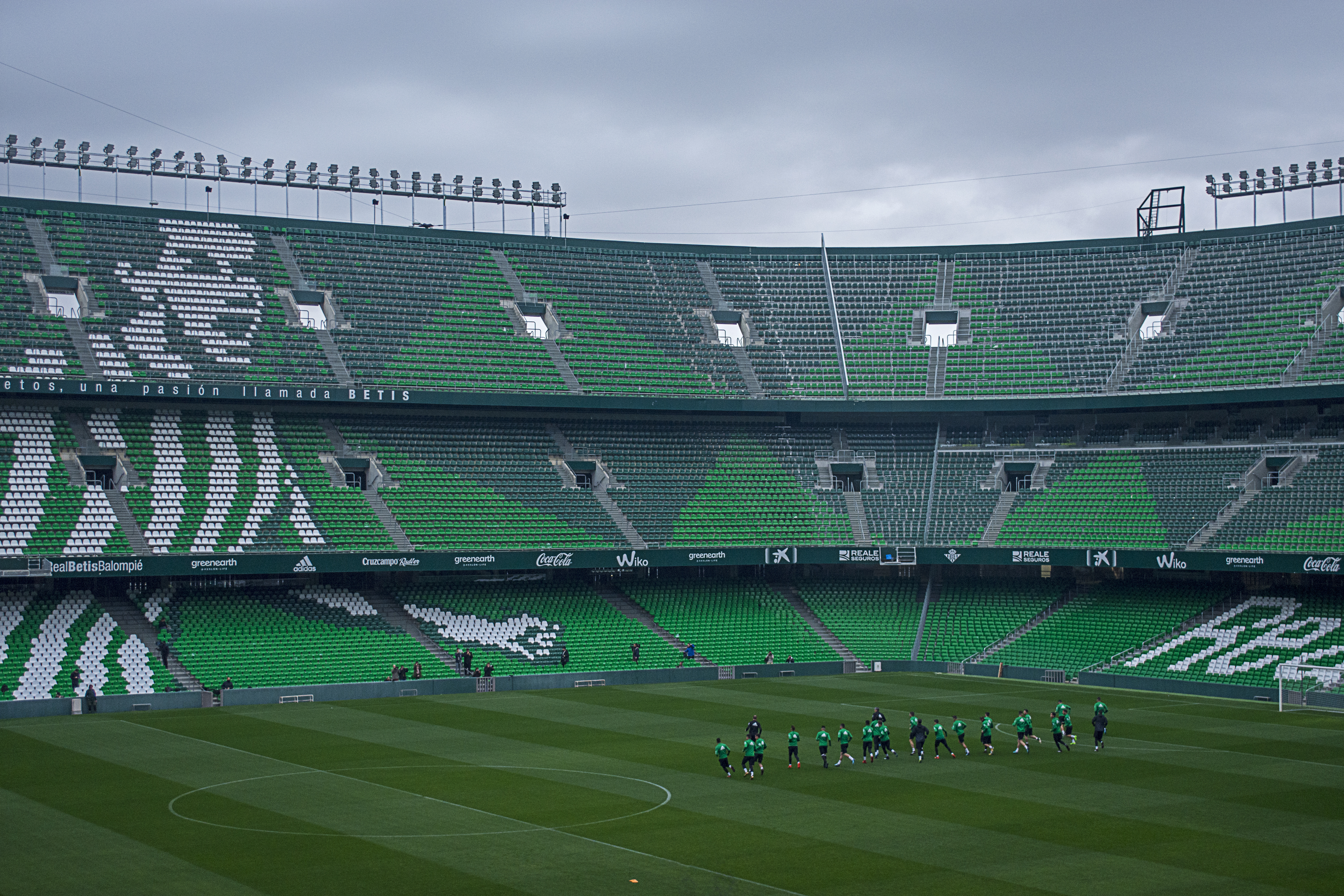
Europe’s grandest stadiums aren’t just steel and stone—they’re alive. They breathe with the chants of generations, shake with the thunder of goals, and glow under floodlights that have seen legends rise and empires fall. These 29 arenas are more than places to watch a match—they’re cathedrals of culture, pride, and unrelenting passion. From the yellow wall of Dortmund to the thunder of Seville, each stadium tells a story that transcends sport. Whether you're chasing the roar of the crowd or the poetry of architecture, these venues deliver unforgettable moments at the intersection of history and heart. So go—stand in their shadows, sing with the locals, and feel the pulse of the game in its purest form. Because in these places, sport isn’t just watched—it’s lived. And once you’ve felt it, you’ll never see a stadium the same way again.

